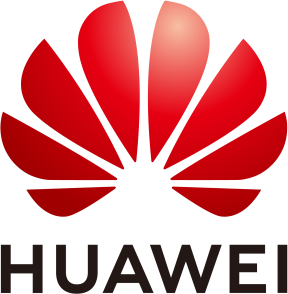All tutorials will be accessible to attendees who have registered for the Tutorial session.
SUNDAY JUNE 09 - MORNING SESSION
T01: Quantum Machine Learning Over Future Communication Networks: Foundations, Challenges, and Opportunities
T02: Reconfigurable Holographic Surfaces: A New Paradigm to Ultra-Massive MIMO for 6G
T03: Localization-of-Things in Beyond 5G Networks
T04: Design and Optimization of NeXt Generation (XG) Multi-band RF/THz/Optical Networks
T05: Non-Terrestrial Networks IoT: Paving the way towards 6G Global Connectivity
T06: Near-Field Communications for 6G: Fundamentals, Challenges, Potentials, and Future Directions
T07: Secure Private Cache-aided Distributed Function Retrieval
SUNDAY JUNE 09 - AFTERNOON SESSION
T08: Joint Statistical Delay and Error-Rate Bounded QoS - The New Paradigm for mURLLC Over 6G Mobile Networks in Finite Blocklength Regime
T09: Non-orthogonal Multiple Access: Fundamentals and Recent Advances
T10: AI/ML in Secure Communication Networks
T11: Role of Communication Systems for Space Domain Awareness
T12: The Dawn of an Immersive Internet: XR, Generative AI and the Road to 6G
T13: Wireless Immersive Video Streaming: Methods and Techniques
T14: Reconfigurable Intelligent Surfaces: Advanced Algorithms, Challenges, and the Road Ahead
THURSDAY JUNE 13 - MORNING SESSION
T15: Open AI Cellular (OAIC): An Open-Source AI-Enhanced O-RAN Platform & Framework Enabling 6G Wireless Research
T16: Learning Methods for Beyond 5G Communications, Localization, and Sensing
T17: When the Sensing sphere touches Communication and Electromagnetism: The academic, industrial and standard perspectives
T18: Empowering Artificial Intelligence-Generated Content (AIGC) with Mobile Edge Networks
T19: 6G waveforms designs and options
T20: Unleashing the Potential: Post-Shannon Paradigms in Future Communication Systems
T21: Generative AI for Future Wireless Communications: Innovations, Challenges, Future Directions
THURSDAY JUNE 13 - AFTERNOON SESSION
T22: Wireless Information and Energy Transfer in the Era of 6G Networks
T23: Distributed Machine Learning at Wireless Edge
T24: Holographic MIMO Communications: Fundamentals and Recent Advances
T25: Intelligent Synchronization for Complex Networked Systems in the 6G Era: Challenges, Recent Advancements, and Future Directions
T26: Machine Learning Over-the-Air: A Tale of Interference
T27: Wi-Fi Sensing: Use Cases, Standard Technologies, and Ecosystem Enablement
T28: Full-Duplex MIMO for Simultaneous Communications and Sensing
SUNDAY JUNE 09 - MORNING SESSION (8:30 - 12:30)
T01: Quantum Machine Learning Over Future Communication Networks: Foundations, Challenges, and Opportunities
Location: Governor's Square 16/Concourse Level
Speakers: Walid Saad and Mahdi Chehimi (Virginia Tech, USA); Samuel Yen-Chi Chen (Wells Fargo, USA)
Abstract: Future communication networks, including 6G and beyond networks and the emerging quantum Internet, will be computing-intensive and demand intelligent processing of vast amounts of high-dimensional data in real-time. One promising approach to handle the generated data is through the use of quantum machine learning (QML) that can leverage unique quantum principles like quantum entanglement and the no-cloning theorem. In this tutorial, the foundational principles of QML and state-of-the-art QML models will be discussed. Moreover, various opportunities at the intersection of QML and future communication networks will be explored, along with their associated challenges and limitations. For instance, in the current era of noisy intermediate-scale quantum (NISQ) computers, QML models have a limited scale and quantum communication networks (QCNs) connecting distant quantum computers become necessary to support scalable and distributed QML applications. In this context, we will discuss distributed QML frameworks, such as quantum federated learning (QFL), over both classical networks and QCNs. In doing so, we will provide an overview on some fundamental challenges and opportunities of QCNs. We conclude with a hands-on interactive session where the audience will be writing their first QML codes. In summary, this tutorial is designed to provide researchers and practitioners from the domains of communication, networking, data science, and signal processing with a thorough understanding of QML.
Bios
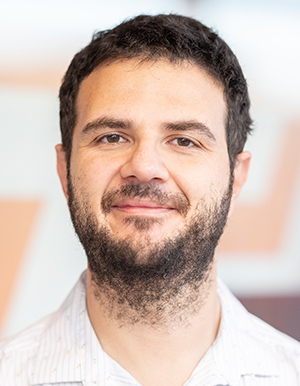 Walid Saad
Walid Saad
Walid Saad (S’07, M’10, SM’15, F’19) received his Ph.D degree from the University of Oslo, Norway in 2010. He is currently a Professor at the Department of Electrical and Computer Engineering at Virginia Tech, where he leads the Network sciEnce, Wireless, and Security (NEWS) laboratory. His research interests include wireless networks (5G/6G/beyond), machine learning, game theory, security, UAVs, semantic communications, cyber-physical systems, and network science. Dr. Saad is a Fellow of the IEEE. He is also the recipient of the NSF CAREER award in 2013, the AFOSR summer faculty fellowship in 2014, and the Young Investigator Award from the Office of Naval Research (ONR) in 2015. He was the (co-)author of twelve conference best paper awards at IEEE WiOpt in 2009, ICIMP in 2010, IEEE WCNC in 2012, IEEE PIMRC in 2015, IEEE SmartGridComm in 2015, EuCNC in 2017, IEEE GLOBECOM (2018 and 2020), IFIP NTMS in 2019, IEEE ICC (2020 and 2022), and IEEE QCE in 2023. He is the recipient of the 2015 and 2022 Fred W. Ellersick Prize from the IEEE Communications Society, of the IEEE Communications Society Marconi Prize Award in 2023, and of the IEEE Communications Society Award for Advances in Communication in 2023. He was also a co-author of the papers that received the IEEE Communications Society Young Author Best Paper award in 2019, 2021, and 2023. Other recognitions include the 2017 IEEE ComSoc Best Young Professional in Academia award, the 2018 IEEE ComSoc Radio Communications Committee Early Achievement Award, and the 2019 IEEE ComSoc Communication Theory Technical Committee Early Achievement Award. From 2015-2017, Dr. Saad was named the Stephen O. Lane Junior Faculty Fellow at Virginia Tech and, in 2017, he was named College of Engineering Faculty Fellow. He received the Dean's award for Research Excellence from Virginia Tech in 2019. He was also an IEEE Distinguished Lecturer in 2019-2020. He has been annually listed in the Clarivate Web of Science Highly Cited Researcher List since 2019. He currently serves as an Area Editor for the IEEE Transactions on Communications. He is the Editor-in-Chief for the IEEE Transactions on Machine Learning in Communications and Networking.
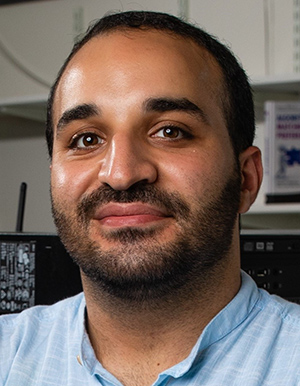 Mahdi Chehimi
Mahdi Chehimi
Mahdi Chehimi is a Ph.D. candidate in the Bradley Department of Electrical and Computer Engineering at Virginia Tech. Mahdi received his B.S. in Electrical Engineering with honors from Kuwait University in 2018 and his M.E. in Electrical and Computer Engineering from the American University of Beirut in 2020 with a focus on communications, radio frequency, and physical layer security. His research interests include quantum communications, quantum networking, and quantum machine learning (QML) with applications to communication networks. Mahdi received the best paper award at the 2023 IEEE International Conference on Quantum Computing and Engineering (QCE) for his work on the scalability of quantum repeater networks. His seminal work on quantum federated learning (QFL) introduced its inaugural framework using quantum data, which pioneered one of the first open-source quantum federated datasets in literature. In 2022, Mahdi was a visiting scholar in the ACQuIRe Lab at the University of Massachusetts Amherst. In addition, Mahdi held a research stay in summer 2023 at Ingenii Inc. as a quantum scientist, where his work focused on practical QML applications in drug discovery and medical imaging. Mahdi was the lead organizer of the first Quantum Information Summit in Lebanon held at the American University of Beirut. He served as a technical committee member in multiple QML workshops at flagship IEEE conferences, and is a frequent reviewer at several IEEE journals. Mahdi is a Quantum Formalism fellow, by Zaiku Group in the United Kingdom, where he received multiple grants to support his research on distributed QML applications and QFL.
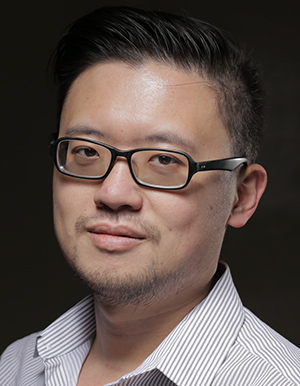 Samuel Yen-Chi Chen
Samuel Yen-Chi Chen
Dr. Samuel Yen-Chi Chen received the Ph.D. and B.S. degree in physics from National Taiwan University, Taipei City, Taiwan. He is now a senior research scientist at Wells Fargo Bank. Prior to that, he was an assistant computational scientist in the Computational Science Initiative, Brookhaven National Laboratory. His research interests include building quantum machine learning algorithms as well as applying classical machine learning techniques to solve quantum computing problems. He won the First Prize In the Software Competition (Research Category) from Xanadu Quantum Technologies, in 2019.
T02: Reconfigurable Holographic Surfaces: A New Paradigm to Ultra-Massive MIMO for 6G
Location: Plaza Court 1/Lobby Level
Speakers: Lingyang Song, Boya Di and Hongliang Zhang (Peking University, China); Zhu Han (University of Houston, USA)
Abstract: Ultra-massive MIMO for high-resolution sensing and high-capacity communications, has been considered as a promising enabling technique for the forthcoming sixth generation (6G) networks. Widely-utilized phased arrays relying on costly components make the implementation of ultra-massive MIMO in practice become prohibitive from both cost and power consumption perspectives. In contrast, the recent developed reconfigurable holographic surfaces (RHSs) composing of densely packing sub-wavelength metamaterial elements provide a new method to solve the above issue without costly hardware components. By leveraging the holographic principle, the RHS serves as an ultra-thin and lightweight surface antenna integrated with the transceiver, thereby providing a promising alternative to phased arrays for realizing ultra-massive MIMO. In this tutorial, we will first provide a basic introduction of RHSs. We then introduce the unique features of RHSs which enables both communication and sensing, in a comprehensive way. Related design, analysis, optimization, and signal processing techniques will be presented. Typical RHS-based applications for the wireless communications and radio-frequency sensing will be explored. Our implementation of RHSs as well as the developed prototypes of communication and sensing systems will also be reported. Several up-to-date challenges and potential research directions will be discussed as well.
Bios
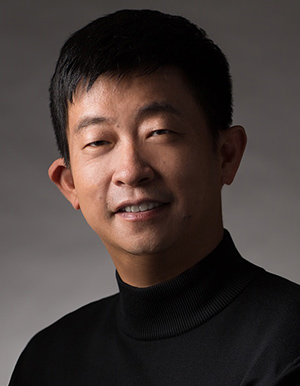 Zhu Han
Zhu Han
Zhu Han (S’01–M’04-SM’09-F’14) received the B.S. degree in electronic engineering from Tsinghua University, in 1997, and the M.S. and Ph.D. degrees in electrical and computer engineering from the University of Maryland, College Park, in 1999 and 2003, respectively.
From 2000 to 2002, he was an R&D Engineer of JDSU, Germantown, Maryland. From 2003 to 2006, he was a Research Associate at the University of Maryland. From 2006 to 2008, he was an assistant professor at Boise State University, Idaho. Currently, he is a John and Rebecca Moores Professor in the Electrical and Computer Engineering Department as well as in the Computer Science Department at the University of Houston, Texas. Dr. Han’s main research targets on the novel game-theory related concepts critical to enabling efficient and distributive use of wireless networks with limited resources. His other research interests include wireless resource allocation and management, wireless communications and networking, quantum computing, data science, smart grid, carbon neutralization, security and privacy. Dr. Han received an NSF Career Award in 2010, the Fred W. Ellersick Prize of the IEEE Communication Society in 2011, the EURASIP Best Paper Award for the Journal on Advances in Signal Processing in 2015, IEEE Leonard G. Abraham Prize in the field of Communications Systems (best paper award in IEEE JSAC) in 2016, IEEE Vehicular Technology Society 2022 Best Land Transportation Paper Award, and several best paper awards in IEEE conferences. Dr. Han was an IEEE Communications Society Distinguished Lecturer from 2015 to 2018 and ACM Distinguished Speaker from 2022 to 2025, AAAS fellow since 2019, and ACM Fellow since 2024. Dr. Han is a 1% highly cited researcher since 2017 according to Web of Science. Dr. Han is also the winner of the 2021 IEEE Kiyo Tomiyasu Award (an IEEE Field Award), for outstanding early to mid-career contributions to technologies holding the promise of innovative applications, with the following citation: ``for contributions to game theory and distributed management of autonomous communication networks." (S’01–M’04-SM’09-F’14) received the B.S. degree in electronic engineering from Tsinghua University, in 1997, and the M.S. and Ph.D. degrees in electrical and computer engineering from the University of Maryland, College Park, in 1999 and 2003, respectively. From 2000 to 2002, he was an R&D Engineer of JDSU, Germantown, Maryland. From 2003 to 2006, he was a Research Associate at the University of Maryland. From 2006 to 2008, he was an assistant professor at Boise State University, Idaho. Currently, he is a John and Rebecca Moores Professor in the Electrical and Computer Engineering Department as well as in the Computer Science Department at the University of Houston, Texas. Dr. Han’s main research targets on the novel game-theory related concepts critical to enabling efficient and distributive use of wireless networks with limited resources. His other research interests include wireless resource allocation and management, wireless communications and networking, quantum computing, data science, smart grid, carbon neutralization, security and privacy. Dr. Han received an NSF Career Award in 2010, the Fred W. Ellersick Prize of the IEEE Communication Society in 2011, the EURASIP Best Paper Award for the Journal on Advances in Signal Processing in 2015, IEEE Leonard G. Abraham Prize in the field of Communications Systems (best paper award in IEEE JSAC) in 2016, IEEE Vehicular Technology Society 2022 Best Land Transportation Paper Award, and several best paper awards in IEEE conferences. Dr. Han was an IEEE Communications Society Distinguished Lecturer from 2015 to 2018 and ACM Distinguished Speaker from 2022 to 2025, AAAS fellow since 2019, and ACM Fellow since 2024. Dr. Han is a 1% highly cited researcher since 2017 according to Web of Science. Dr. Han is also the winner of the 2021 IEEE Kiyo Tomiyasu Award (an IEEE Field Award), for outstanding early to mid-career contributions to technologies holding the promise of innovative applications, with the following citation: "for contributions to game theory and distributed management of autonomous communication networks."
 Hongliang Zhang
Hongliang Zhang
Hongliang Zhang (S’15-M’19) received B.S. and Ph.D. degrees at the School of Electrical Engineering and Computer Science at Peking University, in 2014 and 2019, respectively, where he is currently an assistant professor with School of Electronics. His current research interests include reconfigurable intelligent surfaces, aerial access networks, Internet of Things, optimization theory, and game theory. He received the best doctoral thesis award from Chinese Institute of Electronics in 2019. He is also the recipient of 2023 IEEE ComSoc Asia-Pacific Outstanding Young Researcher Award, 2021 IEEE Comsoc Heinrich Hertz Award for Best Communications Letters, and 2021 IEEE ComSoc Asia-Pacific Outstanding Paper Award. He has served as a TPC Member and a workshop co-chair for many IEEE conferences. He is the winner of the Outstanding Leadership Award as the publicity chair for IEEE EUC in 2022. He is currently an Editor for IEEE Internet of Things Journal, IEEE Transactions on Vehicular Technology, IEEE Communications Letters, and IET Communications. He is an exemplary reviewer for IEEE Transactions on Communications in 2020.
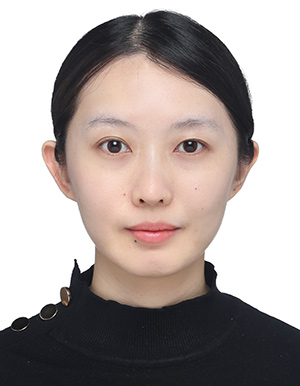 Boya Di
Boya Di
Boya Di (S’17-M’19) is an Assistant Professor at Peking University. Her current research interests include metasurfaces enabled communications and sensing, edge computing, and aerial access networks. Boya serves as an associate editor for IEEE Transactions on Vehicular Technology and an editor for IEEE Communications Tutorials and Surveys, IEEE Internet of Things Journal. She was the recipient of 2020 IEEE N2WOMEN Top-10 Rising Star in Communications and Networking, 2021 IEEE ComSoc Asia-Pacific Outstanding Paper Award, 2022 IEEE ComSoc Asia-Pacific Outstanding Young Researcher Award, and 2023 IEEE ComSoc TCCN Publication Award. She obtained her PhD degree from the Department of Electronics, Peking University, China, in 2019. Prior to that, she received the B.S. degree in electronic engineering from Peking University in 2014. She was a postdoc researcher at Imperial College London during 2019-2021.
T03: Localization-of-Things in Beyond 5G Networks
Speakers: Moe Z. Win (Massachusetts Institute of Technology, USA); Andrea Conti (DE and CNIT, University of Ferrara, Italy)
Abstract: The availability of real-time and precise location awareness is essential for current and future wireless applications, particularly those involving Internet-of-Things and beyond 5G networks toward 6G. The coming years will see the emergence of network localization and navigation in challenging wireless environments with sub-meter accuracy, low latency, and minimal infrastructure requirements. This will call for the Localization-of-Things (LoT), a recent paradigm referring to locating, tracking, and navigating collaborative and non-collaborative nodes (e.g., sensors, vehicles, and objects). As the ability to localize devices in wireless networks becomes increasingly important, it is necessary to be aware of both the fundamentals and the state of the art in location-aware networks.
Topics covered will include: theoretical foundations, machine-learning based algorithms, network experimentation, and performance in 3GPP standardized scenarios for 5G and beyond networks. Theoretical foundations provide performance benchmarks and blueprints for network design. Machine-learning based algorithms exploiting soft information (SI), instead of single value estimates of time and angle, are a way to achieve dramatic performance improvements compared to existing techniques. To harness these benefits, system designers must consider realistic operational settings; thus, we present the performance of SI-based localization algorithms in 3GPP scenarios.
T04: Design and Optimization of NeXt Generation (XG) Multi-band RF/THz/Optical Networks
Speakers: Hina Tabassum (York University, Canada); Hong-Chuan Yang (University of Victoria, Canada); Mohamed-Slim Alouini (King Abdullah University of Science and Technology (KAUST), Saudi Arabia); Ekram Hossain (University of Manitoba, Canada)
Abstract: This tutorial will first review state-of-the-art channel propagation models of terahertz (THz), free space optics (FSO), visible light communication (VLC), and discuss how to model them mathematically. Then, we will present architectures of multi-band networks (MBNs) where different spectrum coexists. Key technical advantages and challenges relating to practical deployment, multi-band transceiver design, and multi-band antenna systems will then be discussed. Next, we will provide an overview of existing resource allocation problems in MBNs. We identify key performance metrics and constraint sets that should be considered for resource allocation in MBNs. Recent research results will be presented to demonstrate potential solution techniques that can overcome some of the MBN design challenges and answer the questions such as (1) whether mobility can be efficiently supported via MBNs? (2) how to efficiently associate and offload devices in a MBN? (3) how the network resource management can be designed to combat the shorter channel coherence time in MBNs, and (4) how to perform molecular-absorption-aware spectrum allocation in large-scale MBNs. Finally, the talk will pin-point some of the emerging technologies that can be leveraged to enhance the multi-band 6G networks' reliability and coverage.
Bios
 Hina Tabassum
Hina Tabassum
Hina Tabassum (Senior Member, IEEE) received the Ph.D. degree from the King Abdullah University of Science and Technology (KAUST). She is currently an Associate Professor with the Lassonde School of Engineering, York University, Canada, where she joined as an Assistant Professor, in 2018. She is also appointed as the York Research Chair of 5G/6G-enabled mobility and sensing applications in 2023, for five years. Prior to that, she was a postdoctoral research associate at University of Manitoba, Canada. She has published over 90 refereed papers in well-reputed IEEE journals, magazines, and conferences. Her publications thus far have garnered more than 5500 citations with an H-index of 35 (according to Google Scholar). She received the Lassonde Innovation Early-Career Researcher Award in 2023 and the N2Women: Rising Stars in Computer Networking and Communications in 2022. She was listed in the Stanford’s list of the World’s Top 2% Researchers in 2021, 2022, and 2023. She has been recognized as an Exemplary Editor by the IEEE COMMUNICATIONS LETTERS (2020), IEEE OPEN JOURNAL OF THE COMMUNICATIONS SOCIETY (IEEE OJCOMS) (2023), and IEEE TRANSACTIONS ON GREEN COMMUNICATIONS AND NETWORKING (2023). She was recognized as an Exemplary Reviewer (Top 2% of all reviewers) 1314 by IEEE TRANSACTIONS ON COMMUNICATIONS in 2015, 2016, 2017, 2019, and 2020. She is the Founding Chair of the Special Interest Group on THz communications in IEEE Communications Society (ComSoc)-Radio Communications Committee (RCC). She served as an Associate Editor for IEEE COMMUNICATIONS LETTERS (2019–2023), IEEE OJCOMS (2019–2023), and IEEE TRANSACTIONS ON GREEN COMMUNICATIONS AND NETWORKING (2020–2023). She is also serving as an Area Editor for (IEEE OJCOMS) and an Associate Editor for IEEE TRANSACTIONS ON COMMUNICATIONS, IEEE TRANSACTIONS ON WIRELESS COMMUNICATIONS, and IEEE COMMUNICATIONS SURVEYS AND TUTORIALS.
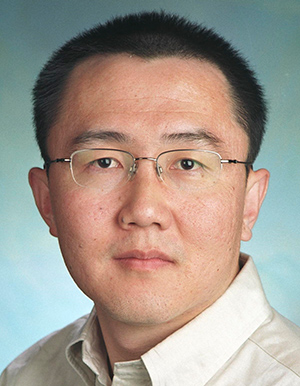 Hong-Chuan Yang
Hong-Chuan Yang
Hong-Chuan Yang received his Ph.D. degree in Electrical Engineering from the University of Minnesota, Twin-cities, USA, in 2003. Since then, Dr. Yang has been with the Department of Electrical and Computer Engineering at the University of Victoria, Victoria, B.C., Canada, where he is now a professor. From 1995 to 1998, Dr. Yang was a Research Associate at the China Academy of Information and Communications Technology (CAICT), Beijing, China. His current research focuses on the design and analysis of intelligent wireless transmission systems for advanced Internet of Things. Dr. Yang has published over 200 referred journal and conference papers. He is the author of {\it Introduction of Digital Wireless Communications} by IET press and the co-author of {\it Advanced Wireless Transmission Technologies} by Cambridge University Press. He is a registered professional engineer (P. Eng.) in British Columbia, Canada.
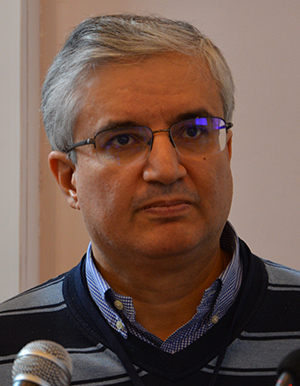 Mohamed-Slim Alouini
Mohamed-Slim Alouini
Mohamed-Slim Alouini was born in Tunis, Tunisia. He received the Ph.D. degree in Electrical Engineering from the California Institute of Technology (Caltech), Pasadena, CA, USA in 1998. He served as a faculty member at the University of Minnesota then in the Texas A&M University at Qatar before joining in 2009 the King Abdullah University of Science and Technology (KAUST) where he is now the Al-Khawarizmi Distinguished Professor of Electrical and Computer Engineering. Prof. Alouini is a Fellow of the IEEE and OPTICA (Formerly the Optical Society of America (OSA)). He is currently particularly interested in addressing the technical challenges associated with the uneven distribution, access to, and use of information and communication technologies in rural, low-income, disaster, and/or hard-to-reach areas.
 Ekram Hossain
Ekram Hossain
Ekram Hossain (F'15) is a Professor in the Department of Electrical and Computer Engineering at University of Manitoba, Canada. He is a Member (Class of 2016) of the College of the Royal Society of Canada. He is a Member (Class of 2016) of the College of the Royal Society of Canada. Also, he is a Fellow of the Canadian Academy of Engineering and a Fellow of the Engineering Institute of Canada. Dr. Hossain's current research interests include design, analysis, and optimization of wireless communication networks with emphasis on 6G and beyond cellular networks, reconfigurable intelligent surface (RIS)-aided wireless communications and sensing, integrated aerial-terrestrial networks, applied machine learning and game theory, and network economics. He has authored/edited several books in these areas (http://home.cc.umanitoba.ca/~hossaina). He was a Distinguished Lecturer of the IEEE Communications Society for two consecutive terms (2012-2015). Also, he was a Distinguished Lecturer of the IEEE Vehicular Technology Society. He was listed as a Clarivate Analytics Highly Cited Researcher in Computer Science in 2017-2023. Dr. Hossain has won several research awards including the "2017 IEEE Communications Society Best Survey Paper Award" and the “2011 IEEE Communications Society Fred Ellersick Prize Paper Award". He served as the Editor-in-Chief of IEEE Press (2018-2021) and the Editor-inChief for the IEEE Communications Surveys and Tutorials (2012-2016).
T05: Non-Terrestrial Networks IoT: Paving the way towards 6G Global Connectivity
Speakers: Aryan Kaushik (University of Sussex, United Kingdom (Great Britain); Muhammad Zeeshan Shakir (University of the West of Scotland, United Kingdom (Great Britain)
Abstract: The recently adopted IMT-2030 framework by ITU-R envisions 6G networks to provide intelligent and ubiquitous connectivity for reliable, sustainable and resilient communications. Considering recent 3GPP Release 17/18, and upcoming R19 to appear by end of 2023, where RAN4 working group focuses on satellite and cellular spectrum co-channelling, RAN2 works on NR/internet-of-things (IoT) non-terrestrial network (NTN) enhancement solutions, etc., NTN IoT will play a vital role in 6G wireless standards. For NTN IoT, evolving signal processing methods, edge and cloud computing, deep reinforcement learning techniques for LEO satellites and UAVs/flying platforms, AI based deployments for NTN IoT, etc., have drastically changed the current realization of the space, sky, terrestrial networks (TN) and integrated NTN-TN connectivity. This tutorial will present a comprehensive overview of emerging NTN IoT based 6G wireless networking including vision, fundamentals, requirements, real-World applications and emerging problem design concepts. This tutorial will also cover key enabling technologies such as green AI for NTN IoT, deep reinforcement learning and edge computing enabled NTN IoT solutions, UAVs/flying platforms as access, relay and fronthaul/backhaul in NTN IoT, and the latest NTN IoT use cases which have led to the development of exciting new vertical frameworks.
Bios
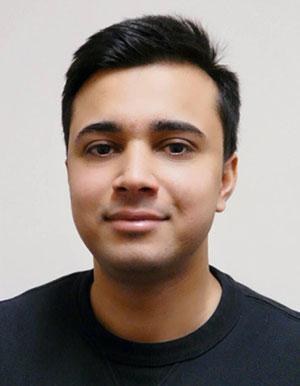 Aryan Kaushik
Aryan Kaushik
Prof. Aryan Kaushik is Assistant Professor at the University of Sussex, UK, since 2021. Prior to that, he has been with University College London (UCL), UK, University of Edinburgh, UK, and Hong Kong University of Science and Technology, Hong Kong. He has also held visiting appointments at Imperial College London, UK, University of Luxembourg, Luxembourg, Athena RC, Greece, and Beihang University, China. He has been External PhD Examiner internationally such as at Universidad Carlos III de Madrid (UC3M), Spain, in 2023. He has been an Invited Panel Member at the UK EPSRC ICT Prioritisation Panel in 2023 plus an Invited Proposal Reviewer for the EPSRC, and has led in several collaborative projects forging industry and academic collaborations on topics of strategic importance. Prof. Kaushik is also a member of the One6G Association, a consortium of global industry and academic working groups on 6G. He has been Editor of two upcoming books on ISAC and 6G NTN by Elsevier, and several journals such as IEEE Open Journal of the Communications Society (Best Editor Award 2023), IEEE Communications Letters (Exemplary Editor 2023), IEEE Communications Technology News (initiated IEEE CTN Podcasts Series) and several IEEE ComSoc journal/magazine special issues. He has been an invited/keynote and tutorial speaker for over 48 academic/industry events and conferences globally such as at IEEE ICC 2024, IEEE ICMLCN 2024, IEEE GLOBECOM 2023, IEEE WCNC 2023, IEEE VTC-Spring 2023, EuCNC and 6G Summit 2023, Huawei UK Vision Forum 2023, FutureWei USA University Days Workshop 2023, One6G Summit 2023, and many others. He has been chairing in Organizing and Technical Program Committees of over 6 flagship IEEE conferences such as IEEE ICC 2024-26, IEEE WCNC 2023-24, IEEE ICMLCN 2024 and IEEE WF-PST 2024. He has been actively organizing workshops (as General Chair of over 15 workshops) for IEEE ComSoc conferences globally such as at IEEE ICC 2024, IEEE Globecom 2023, IEEE WCNC 2023-24, IEEE PIMRC 2022-23, and several others.
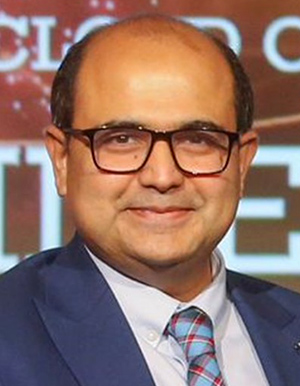 Muhammad Zeeshan Shakir
Muhammad Zeeshan Shakir
Dr. Muhammad Zeeshan Shakir is a Professor of Wireless Communication and serves as the Director of Digital Connectivity and Innovation for Sustainable Futures at the University of the West of Scotland, UK. With an academic career spanning over 15 years, he has secured over £5 Million research funding from prestigious organizations such as Innovate UK, the UK Government, ERASMUS program, Qatar National Research Fund, British Council, and the Scottish Government.
His expertise lies in the design and development of cutting-edge 5G/6G wireless communications systems, particularly focusing on digital connectivity, health and well-being, and climate change. Prof. Shakir is a recognized authority in the fields of Internet of Things (IoT), Artificial Intelligence (AI), and Cloud Computing. His prolific research contributions include over 150 published articles and contributions to 10 books.
Prof. Shakir has won numerous research awards and prizes. Some notable recognitions include The Herald Higher Education Award in 2023, the SAMEE STEM Inspiring Diversity and Inclusion Award in 2022, the SICSA Best Poster Award in 2022, the IEEE Communications Society Fred W. Ellersick Award in 2021, and the IEEE Communications Society and China Institute of Communications Best Journal Article Award in 2019. Additionally, he has received UWS STARS Awards in 2020 and 2018 for outstanding research, teaching, and enterprise performances.
Prof. Shakir has actively contributed to the academic community by serving as a chair and organizing committee member for several conferences and technical program symposiums/workshops in IEEE flagship conferences such as Globecom, ICC, and WCNC. He has been a frequent keynote and tutorial speaker at IEEE flagship conferences. He currently holds the position of executive chair for IEEE ICC 2026 in Glasgow and serves as the chair of IEEE Communications Society's emerging technologies committee on backhaul/fronthaul and the Public Safety Technology Committee Informatics. Recognized as a Fellow of the Higher Education Academy in the UK and a Senior Member of IEEE, Prof. Shakir remains deeply engaged in the IEEE Communications Society. He is a member of Royal Society of Edinburgh Young Academy of Scotland.
T06: Near-Field Communications for 6G: Fundamentals, Challenges, Potentials, and Future Directions
Speakers: Linglong Dai (Tsinghua University, China); Haiyang Zhang (Nanjing University of Posts and Telecommunications, China); Yonina C. Eldar (Weizmann Institute of Science, Israel)
Abstract: An extremely large antenna array (ELAA) is required in 6G to achieve 10-fold spectrum efficiency than 5G. ELAA for 6G not only means a sharp increase in the number of antennas but also results in the electromagnetic (EM) radiation field change from far-field to near-field. In specific, the boundary between these two regions is determined by the Rayleigh distance, which is proportional to the product of the square of the array aperture. With the significant increase of the antenna number in future 6G systems, the near-field region will expand by orders of magnitude. Therefore, near-field communications will become essential for future 6G networks.
In this tutorial, the near-field communication techniques for 6G will be discussed. Specifically, the fundamental difference between far-field and near-field communications will be clarified at first, where we explain the principle to determine the boundary of near-field and far-field regions for MIMO and RIS-aided communications. Then we investigate the near-field communication techniques that are designed to compensate for the performance loss of far-field techniques in the near-field region. Moreover, we also introduce the techniques that exploit the nature of near-field spherical wavefront for capacity enhancement and accessibility improvement. Finally, several future research directions are pointed out.
Bios
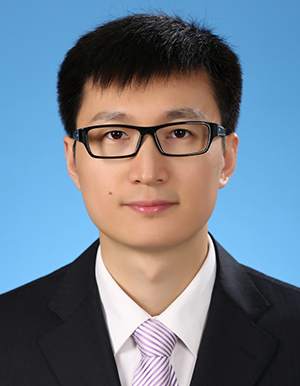 Linglong Dai
Linglong Dai
Linglong Dai (IEEE Fellow) is a Professor of the Department of Electronic Engineering, Tsinghua University, Beijing, China. His research area is transmission theory and technology for wireless communications, with the research topics including massive MIMO, reconfigurable intelligent surface (RIS), millimeter-wave and terahertz communications, machine learning for wireless communications, and electromagnetic information theory (EIT). He has published over 100 IEEE journal papers and over 60 IEEE conference papers. He also holds 21 granted patents. He co-authored the book “mmWave Massive MIMO: A Paradigm for 5G” (Academic Press, Elsevier, 2016). He has received 6 IEEE conference Best Paper Awards at IEEE ICC, GLOBECOM, VTC, etc. He has also received the Electronics Letters Best Paper Award in 2016, the Outstanding Young Scholar of NSFC in 2017, the IEEE ComSoc Asia-Pacific Outstanding Young Researcher Award in 2017, the IEEE ComSoc Leonard G. Abraham Prize in 2020, the IEEE ComSoc Stephen O. Rice Prize in 2022, the IEEE ICC Outstanding Demo Award in 2022, and the Distinguished Young Scholar of NSFC in 2023. He was listed as a Highly Cited Researcher by Clarivate from 2020 to 2023.
 Haiyang Zhang
Haiyang Zhang
Haiyang Zhang received Ph.D. degree from Southeast University in 2017. From 2017 to 2020, He was a Postdoctoral Researcher with the Singapore University of Technology and Design, Singapore. From 2020 to 2022, he was a Postdoctoral Researcher with the Weizmann Institute of Science, Israel, where he was awarded the FGS Prize for outstanding research achievements. He is currently a Professor with the School of Communications and Information Engineering, Nanjing University of Posts and Telecommunications. His research interests include 6G near-field MIMO technologies, deep learning and sampling theory. He serves as the Co-Chair for the IEEE ICC 2023 and 2024 Workshop on near-field localization and communications for 6G.
T07: Secure Private Cache-aided Distributed Function Retrieval
Speakers: Daniela Tuninetti (University of Illinois Chicago, USA); Mingyue Ji (University of Utah, USA); Hua Sun (University of North Texas, USA)
Abstract: Modern algorithms need to efficiently execute complex queries on massive databases in a way that minimizes the use of communication resources while preserving the privacy of the entity that initiated the query, which are functions of the data points stored at remote servers. For example, linear and multivariate polynomial operations are fundamental primitives for building the complex queries that support on-line big-data analytics and data mining procedures. In those scenarios, it is resource-consuming to download locally all the input variables to compute the desired output value. Instead, it is desirable to directly download the result of the desired output function, which should also be kept private and secure. This tutorial covers the problem of privately retrieving, at locally distributed nodes, the output of functions whose inputs are stored at remote servers and partially at local nodes. The aim is to discuss a framework for such current and future distributed computing scenarios. This research topic is at the intersection of coded caching Private Function Retrieval (PFR), and security and is expected to interest and spark conversations across communities (information theory, signal processing, and communications) to move forward our understanding of cache-aided PFR, both theoretically and practically (codes and algorithm design).
Bios
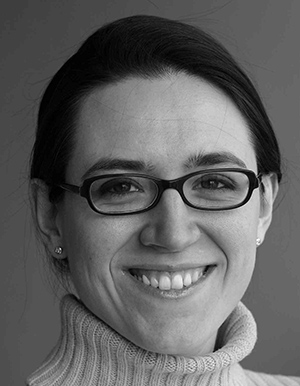 Daniela Tuninetti
Daniela Tuninetti
Daniela Tuninetti (Fellow, IEEE) received the Ph.D. degree in electrical engineering from ENST/Télécom ParisTech, Paris, France, in 2002 (with work done at the Eurecom Institute in Sophia Antipolis, France). She is currently a Professor and Department Head with the Department of Electrical and Computer Engineering, University of Illinois Chicago (UIC), where she joined in 2005. She was a Post-Doctoral Research Associate with the School of Communication and Computer Science, Swiss Federal Institute of Technology in Lausanne (EPFL), Lausanne, Switzerland, from 2002 to 2004.
Her research interests include ultimate performance limits of wireless interference networks (with a special emphasis on cognition and user cooperation), coexistence between radar and communication systems, multi-relay networks, content-type coding, cache-aided systems, and distributed private coded computing. She was a recipient of the Best Paper Award at the European Wireless Conference in 2002; the NSF CAREER Award in 2007; named University of Illinois Scholar in 2015. She was the Editor-in-Chief of the IEEE INFORMATION THEORY SOCIETY NEWSLETTER, from 2006 to 2008; an Editor of IEEE COMMUNICATION LETTERS, from 2006 to 2009; an Editor for IEEE TRANSACTIONS ON WIRELESS COMMUNICATIONS, from 2011 to 2014; an Editor for IEEE TRANSACTIONS ON INFORMATION THEORY, from 2014 to 2017; an Editor of IEEE TRANSACTIONS ON COMMUNICATIONS, for 2021 to 2022. She was Distinguished Lecturer of the Information Theory Society in 2020 and 2022.
 Hua Sun
Hua Sun
Hua Sun received the B.E. degree in Communications Engineering from Beijing University of Posts and Telecommunications, China, in 2011, and the M.S. and Ph.D. degrees in Electrical and Computer Engineering from University of California Irvine, USA, in 2013 and 2017, respectively. He is an Associate Professor in the Department of Electrical Engineering at the University of North Texas, USA. His research interests include information theory and its applications to communications, privacy, security, and storage. Dr. Sun is a recipient of the NSF CAREER award in 2021, the UNT College of Engineering Junior Faculty Research Award in 2021, and the UNT College of Engineering Distinguished Faculty Fellowship in 2023. His co-authored papers received the IEEE Jack Keil Wolf ISIT Student Paper Award in 2016, an IEEE GLOBECOM Best Paper Award in 2016, and the 2020-2021 IEEE Data Storage Best Student Paper Award.
SUNDAY JUNE 09 - AFTERNOON SESSION (13:30 - 17:30)
T08: Joint Statistical Delay and Error-Rate Bounded QoS - The New Paradigm for mURLLC Over 6G Mobile Networks in Finite Blocklength Regime
Speaker: Xi Zhang (Texas A&M University, USA)
Abstract: The 6G mobile wireless networks is envisioned to provide various advanced 6G wireless services featured with Massive Ultra-Reliable and Low Latency Communications (mURLLC), which have a very wide range of crucial applications including: video/audio streaming, 3D immersive-media (e.g., XR - AR/MR/VR), metaverse streaming, digital twin (DT), autonomous vehicles, interactive robotics, telemedicine, etc. However, how to efficiently support mURLLC over 6G wireless networks remains one of the most challenging open problems because mURLLC services are both highly spectrum/computation-intensive and time/error-sensitive, for which the deterministic delay-bounded guarantee is practically infeasible due to the stochastically time-varying wireless fading channels and interferences. To overcome these difficulties, the academia and industry have made a great deal of efforts in developing various 6G standards and promising candidate techniques in terms of the new principles, theories, architectures, protocols, etc. Towards this end, in this tutorial we will first introduce and define the new 6G-standard traffic service class: mURLLC and its important and featured technical specifications. Then, we justify why and how our developed statistical delay and error-rate bounded QoS theory has been formulated as the new paradigm to support mURLLC over 6G mobile wireless networks by jointly guaranteeing both the statistical delay and error-rate bounded QoS.
Bio
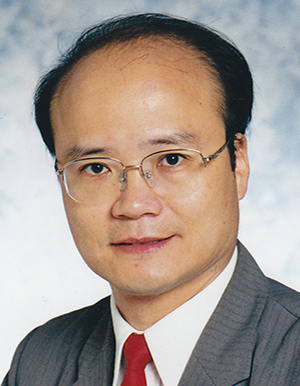 Xi Zhang
Xi Zhang
Xi Zhang (S'89-SM'98-F'15) received the B.S. and M.S. degrees from Xidian University, Xi’an, China, the M.S. degree from Lehigh University, Bethlehem, PA, USA, all in Electrical Engineering and Computer Science, and the Ph.D. degree in Electrical Engineering and Computer Science (Electrical Engineering -- Systems) from The University of Michigan, Ann Arbor, MI, USA. He is currently a Full Professor and the Founding Director of the Networking and Information Systems Laboratory, Department of Electrical and Computer Engineering, Texas A&M University, College Station, TX, USA.
He is a Fellow of the IEEE for contributions to quality of service (QoS) theory in mobile wireless networks. He was with the Networks and Distributed Systems Research Department, AT&T Bell Laboratories, Murray Hill, NJ, USA, and AT&T Laboratories Research, Florham Park, NJ, in 1997. He was a Research Fellow with the School of Electrical Engineering, University of Technology, Sydney, Australia, and the Department of Electrical and Computer Engineering, James Cook University, Australia. He has published more than 400 research articles on wireless networks and communications systems, network protocol design and modeling, statistical communications, random signal processing, information theory, and control theory and systems. He is an IEEE Distinguished Lecturer of the IEEE Communications Society and IEEE Vehicular Technology Society, respectively. He received the TEES Select Young Faculty Award for Excellence in Research Performance from the Dwight Look College of Engineering at Texas A&M University, College Station, in 2006, and the Outstanding Faculty Award from the College of Engineering, Texas A&M University, in 2020. He received the U.S. National Science Foundation CAREER Award in 2004 for his research in the areas of mobile wireless and multicast networking and systems. He received the six best paper awards at IEEE GLOBECOM 2020, IEEE ICC 2018, IEEE GLOBECOM 2014, IEEE GLOBECOM 2009, IEEE GLOBECOM 2007, and IEEE WCNC 2010, respectively. One of his IEEE JOURNAL ON SELECTED AREAS IN COMMUNICATIONS papers has been listed as the IEEE Best Readings Paper (receiving the highest citation rate among all IEEE TRANSACTIONS/Journal articles in the area) on wireless cognitive radio networks and statistical-QoS provisioning over mobile wireless networking.
Prof. Zhang is serving or has served as Editors for IEEE TRANSACTIONS ON COMMUNICATIONS, IEEE TRANSACTIONS ON WIRELESS COMMUNICATIONS, IEEE TRANSACTIONS ON VEHICULAR TECHNOLOGY, IEEE TRANSACTIONS ON GREEN COMMUNICATIONS AND NETWORKING, and IEEE TRANSACTIONS ON NETWORK SCIENCE AND ENGINEERING. He served twice as Guest Editor for IEEE JOURNAL ON SELECTED AREAS IN COMMUNICATIONS for Special Issue on “Broadband Wireless Communications for High Speed Vehicles” and Special Issue on “Wireless Videos”. He was an Associate Editor for IEEE COMMUNICATIONS LETTERS. He served twice as Lead Guest Editors for IEEE Communications Magazine for Special Issue on “Advances in Cooperative Wireless Networks” and Special Issue on “Underwater Wireless Communications/Networks: Theory and Applications.” He served as Guest Editor for IEEE Wireless Communications Magazine for Special Issue on “Next Generation CDMA vs. OFDMA for 5G”. He served as an Editor for Wireless Communications and Mobile Computing, Journal of Computer Systems, Networks, and Communications, and Security and Communication Networks. He served as an Area Editor for Computer Communications, etc. He is serving or has served as TPC Chair for IEEE GLOBECOM 2011, TPC Vice-Chair for IEEE INFOCOM 2010, TPC Area Chair for IEEE INFOCOM 2012, Panel/Demo/Poster Chair for ACM MobiCom 2011, General Chair for IEEE WCNC 2013, TPC Chair for IEEE INFOCOM 2017–2019 Workshops on “Integrating Edge Computing, Caching, and Offloading in Next Generation Networks", General Chair for IEEE ICDCS 2024 Workshop on "Digital Twin-Enabled 6G Multi-Tier Distributed Computing Systems". etc.
T09: Non-orthogonal Multiple Access: Fundamentals and Recent Advances
Speakers: Zhiguo Ding (University of Manchester, United Kingdom (Great Britain); Yuanwei Liu (Queen Mary University of London, United Kingdom (Great Britain); Hamid Jafarkhani (University of California, Irvine, USA); Mojtaba Vaezi (Villanova University, USA)
Abstract: With the exponential growth of wireless devices and diverse services like virtual/augmented reality and the Internet-of-Everything, next-generation wireless networks face unprecedented challenges in managing heterogeneous data traffic, massive connectivity, ultra-high bandwidth efficiency, and ultra-low latency. To address these challenges, advanced multiple access schemes are essential, leading to the development of non-orthogonal multiple access (NOMA) and next-generation multiple access (NGMA) in general. This tutorial has two parts: Part I of this tutorial aims to elucidate NOMA's potential and limitations by discussing theoretical gains versus practical implementation challenges. It covers NOMA fundamentals, asynchronous NOMA, state-of-the-art efforts in experimental NOMA, and innovative modulation and coding strategies based on deep learning and artificial intelligence. The tutorial also identifies key research directions for effective NOMA integration into real-world networks. Part II introduces the "One Basic Principle Plus Four New" concept for designing NGMA, transitioning from orthogonality to non-orthogonality. It explores multiple access techniques in a non-orthogonal manner, applies NGMA to meet 6G requirements, and discusses its interplay with emerging techniques. Additionally, the tutorial explores new NGMA applications, such as near-field communications, semantic communications, mobile edge computing, and investigates machine learning approaches in NGMA networks.
Bios
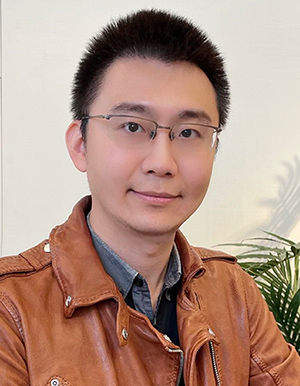 Yuanwei Liu
Yuanwei Liu
Yuanwei Liu is a Senior Lecturer (Associate Professor) at the School of Electronic Engineering and Computer Science, Queen Mary University of London. His research interests include non-orthogonal multiple access, reconfigurable intelligent surfaces, near-field communications, integrated sensing and communications, and machine learning. He is a Fellow of the IEEE, a Fellow of AAIA, a Web of Science Highly Cited Researcher, an IEEE Communication Society Distinguished Lecturer, an IEEE Vehicular Technology Society Distinguished Lecturer, the rapporteur of ETSI Industry Specification Group on Reconfigurable Intelligent Surfaces on work item of “Multi-functional Reconfigurable Intelligent Surfaces (RIS): Modelling, Optimisation, and Operation”, and the UK representative for the URSI Commission C on “Radio communication Systems and Signal Processing”. He was listed as one of 35 Innovators Under 35 China in 2022 by MIT Technology Review. He received IEEE ComSoc Outstanding Young Researcher Award for EMEA in 2020. He received the 2020 IEEE Signal Processing and Computing for Communications (SPCC) Technical Committee Early Achievement Award, IEEE Communication Theory Technical Committee (CTTC) 2021 Early Achievement Award. He received IEEE ComSoc Outstanding Nominee for Best Young Professionals Award in 2021. He is the co-recipient of the Best Student Paper Award in IEEE VTC2022-Fall, the Best Paper Award in ISWCS 2022, the 2022 IEEE SPCC-TC Best Paper Award, the 2023 IEEE ICCT Best Paper Award, and the 2023 IEEE ISAP Best Emerging Technologies Paper Award. He serves as the Co-Editor-in-Chief of IEEE ComSoc TC Newsletter, an Area Editor of IEEE Communications Letters, an Editor of IEEE Communications Surveys & Tutorials, IEEE Transactions on Wireless Communications, IEEE Transactions on Vehicular Technology, IEEE Transactions on Network Science and Engineering, and IEEE Transactions on Communications (2018-2023). He serves as the (leading) Guest Editor for Proceedings of the IEEE on Next Generation Multiple Access, IEEE JSAC on Next Generation Multiple Access, IEEE JSTSP on Intelligent Signal Processing and Learning for Next Generation Multiple Access, and IEEE Network on Next Generation Multiple Access for 6G. He serves as the Publicity Co-Chair for IEEE VTC 2019-Fall, the Panel Co-Chair for IEEE WCNC 2024, Symposium Co-Chair for several flagship conferences such as IEEE GLOBECOM, ICC and VTC. He serves the academic Chair for the Next Generation Multiple Access Emerging Technology Initiative, vice chair of SPCC and Technical Committee on Cognitive Networks (TCCN).
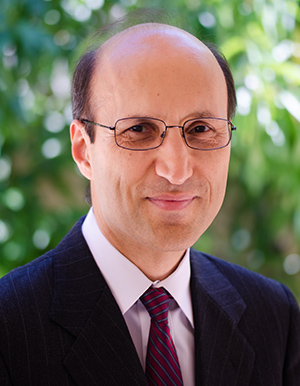 Hamid Jafarkhani
Hamid Jafarkhani
Hamid Jafarkhani is a Chancellor's Professor at the Department of Electrical Engineering and Computer Science, University of California, Irvine, where he is also the Director of Center for Pervasive Communications and Computing, , the former Director of Networked Systems Program, and the Conexant-Broadcom Endowed Chair. He was a Visiting Scholar at Harvard University in 2015 and a Visiting Professor at California Institute of Technology in 2018. He was the 2020-2022 elected Faculty Chair of the UCI School of Engineering. Among his awards are the NSF Career Award, the UCI Distinguished Mid-Career Faculty Award for Research, the School of Engineering Excellence in Research Senior Career Award, the IEEE Marconi Prize Paper Award in Wireless Communications, the IEEE Communications Society Award for Advances in Communication, the IEEE Wireless Communications Technical Committee Recognition Award, the IEEE Signal Processing and Computing for Communications Technical Recognition Award, couple of conference best paper awards, and the IEEE Eric E. Sumner Award. He is the 2017 Innovation Hall of Fame Inductee at the University of Maryland's School of Engineering. He was an Associate Editor for the IEEE Communications Letters from 2001-2005, an editor for the IEEE Transactions on Wireless Communications from 2002-2007, an editor for the IEEE Transactions on Communications from 2005-2007, an area editor for the IEEE Transactions on Wireless Communications from 2007-2012, and a Steering Committee Member of the IEEE Transactions on Wireless communications from 2013-2016. He was the general chair of the 2015 IEEE Communication Theory Workshop and the general co-chair of the 2018 IEEE Global Conference on Signal and Information Processing (GlobalSIP). He was an IEEE ComSoc Distinguished lecturer. Dr. Jafarkhani is listed as an ISI highly cited researcher. According to the Thomson Scientific, he is one of the top 10 most-cited researchers in the field of "computer science" during 1997-2007. He is a Fellow of AAAS, an IEEE Fellow, and the author of the book "Space-Time Coding: Theory and Practice."
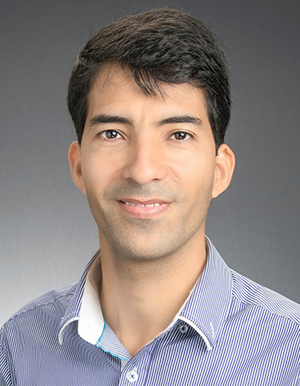 Mojtaba Vaezi
Mojtaba Vaezi
Mojtaba Vaezi (S’09–M’14–SM’18) received the B.Sc. and M.Sc. degrees from Amirkabir University of Technology (Tehran Polytechnic) and the Ph.D. degree from McGill University, all in Electrical Engineering. From 2015 to 2018, he was with Princeton University as a Postdoctoral Research Fellow and Associate Research Scholar. He is currently an Associate Professor of ECE at Villanova University. Before joining Princeton, he was a researcher at Ericsson Research in Montreal, Canada. His research interests include the broad areas of signal processing and machine learning for wireless communications with an emphasis on physical layer security and sixth-generation (6G) radio access technologies. Among his publications in these areas is the book Multiple Access Techniques for 5G Wireless Networks and Beyond (Springer, 2019). Dr. Vaezi has held editorial positions at various IEEE journals, currently serving as an Editor for IEEE Transactions on Communications along with his role as a Senior Editor for IEEE Communications Letters and Senior Area Editor for IEEE Signal Processing Letters. He has co-organized six NOMA workshops at ICC and Globecom from 2017 to 2020. He is a recipient of several academic, leadership, and research awards, including McGill Engineering Doctoral Award, IEEE Larry K. Wilson Regional Student Activities Award in 2013, the Natural Sciences and Engineering Research Council of Canada (NSERC) Postdoctoral Fellowship in 2014, Ministry of Science and ICT of Korea’s best paper award in 2017, IEEE Communications Letters Exemplary Editor Award in 2018, the 2020 IEEE Communications Society Fred W. Ellersick Prize, the 2021 IEEE Philadelphia Section Delaware Valley Engineer of the Year Award, and the National Science Foundation (NSF) CAREER Award in 2023.
T10: AI/ML in Secure Communication Networks
Speakers: Yi Qian (University of Nebraska - Lincoln, USA); Shengjie Xu (San Diego State University, USA)
Abstract: In recent years, Artificial Intelligence (AI) has made remarkable strides, often outperforming humans in tasks like image recognition, gaming, and natural language processing. AI has also revolutionized security in communication networks and systems, empowering them to analyze vast datasets, identify attack patterns, and automate threat detection, response, and recovery processes for proactive security. Machine Learning (ML) models, in particular, play a pivotal role in security solutions, including anomaly detection, penetration testing, network traffic analysis, and threat intelligence. In this tutorial, we begin by providing an overview of security threats and vulnerabilities in communication networks and systems. Next, we delve into the fundamentals of Artificial Intelligence and Machine Learning. We then explore AI/ML applications for threat detection and secure edge computing. Additionally, we address the challenges and solutions in federated learning within secure communication networks and systems, as well as the defense against adversarial attacks and threats through AI/ML. We also touch on the role of AI/ML in cryptography for enhancing secure communications. Finally, we conclude with insights into the future directions of AI/ML in the realm of secure communication networks and systems.
Bios
 Yi Qian
Yi Qian
Yi Qian received a Ph.D. degree in electrical engineering from Clemson University, in Clemson, South Carolina. He is currently a professor in the Department of Electrical and Computer Engineering, University of Nebraska-Lincoln (UNL). Prior to joining UNL, he worked in the telecommunications industry, academia, and government. Some of his previous professional positions include serving as a senior member of scientific staff and a technical advisor at Nortel Networks, a senior systems engineer and a technical advisor at several startup companies, an assistant professor at the University of Puerto Rico at Mayaguez, and a senior researcher at the National Institute of Standards and Technology. His research interests include cyber security and communication network security, and computer and communication networks. Prof. Yi Qian is a Fellow of IEEE. He was previously Chair of the IEEE Technical Committee for Communications and Information Security. He was the Technical Program Chair for IEEE International Conference on Communications 2018. He was a Distinguished Lecturer for IEEE Vehicular Technology Society and a Distinguished Lecturer for IEEE Communications Society. He serves or has served on the Editorial Boards of several international journals and magazines, including as the Editor-in-Chief for IEEE Wireless Communications between July 2018 and June 2022.
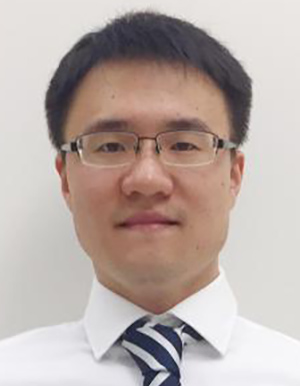 Shengjie Xu
Shengjie Xu
Shengjie Xu received a Ph.D. in computer engineering from the Department of Electrical and Computer Engineering at the University of Nebraska-Lincoln and an M.S. in telecommunications from the University of Pittsburgh. He is currently an Assistant Professor in the Department of Management Information Systems at the Fowler College of Business at San Diego State University (SDSU). His research interests include cybersecurity, secure artificial intelligence, edge computing, and critical infrastructure protection. He currently serves as a Technical Editor for the IEEE Wireless Communications and has served as a proposal review panelist for the U.S. National Science Foundation (NSF). He has received several research and training grants from the NSF. He is the author of the book “Cybersecurity in Intelligent Networking Systems” (John Wiley/IEEE Press, 2023). He is the recipient of the IET Journals Premium Award for Best Paper in 2020 and the Best Poster Award at the DRCN 2015. He is a member of IEEE and ACM and holds multiple professional certifications in cybersecurity and computer networking.
T11: Role of Communication Systems for Space Domain Awareness
Speakers: Gunes Karabulut Kurt (Ecole Polytechnique de Montreal, Canada); Gregory Falco (Cornell University, USA)
Abstract: Earth's growing low Earth orbit (LEO) satellite networks provide diverse services, but they also bring risks that are associated with the collision risk, interference, orbital debris, and limited Resources: Increasing spacecraft strains ground station capabilities. Proper resource management and coordination are essential. Addressing these issues is vital, especially in the face of attacks or unforeseen events. Stakeholders explore Space Domain Awareness (SDA) to detect, track, and understand space objects. SDA aims for situational awareness, safety, security, efficiency, and resilience. This tutorial introduces SDA, delves into future security threats, and explores communication systems' remedies.
Bios
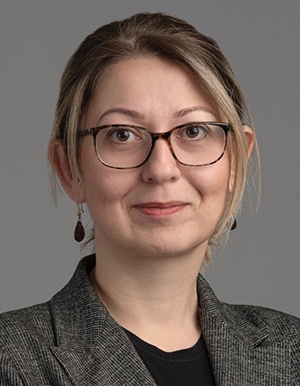 Gunes Karabulut Kurt
Gunes Karabulut Kurt
Gunes Karabulut Kurt (Senior Member, IEEE) is a Canada Research Chair (Tier 1) in New Frontiers in Space Communications and Associate Professor at Polytechnique Montréal, Montréal, QC, Canada. She is also an adjunct research professor at Carleton University, ON, Canada. Gunes is a Marie Curie Fellow and has received the Turkish Academy of Sciences Outstanding Young Scientist (TÜBA-GEBIP) Award in 2019. She received her Ph.D. degree in electrical engineering from the University of Ottawa, ON, Canada.
 Gregory Falco
Gregory Falco
Prof. Gregory Falco is an aerospace security expert that designs and develops next-generation defense capabilities. He is an Assistant Professor at Cornell University’s Sibley School of Mechanical and Aerospace Engineering and the Systems Engineering Program. Falco is the Director of the Aerospace ADVERSARY Lab and is the founding chair of the IEEE international technical Standard for Space System Cybersecurity. A Fulbright Scholar, Falco is the recipient of DARPA’s Young Faculty Award, named as a DARPA RISER and has been listed in Forbes 30 Under 30. Falco received his PhD at the Massachusetts Institute of Technology.
T12: The Dawn of an Immersive Internet: XR, Generative AI and the Road to 6G
Speakers: Mischa Dohler (Ericsson Inc, USA); Christina Chaccour (Ericsson, USA)
Abstract: The tutorial offers a well-timed and comprehensive exploration into the emergence of the next-generation internet. Through an in-depth examination of Extended Reality (XR), Generative Artificial Intelligence (AI), and the forthcoming 6G network capabilities, attendees will garner a robust understanding of the technological advancements underpinning the Immersive Internet. The structured discourse encompasses the foundational elements of XR, extending to explore technical research and development prospects while also addressing the pressing ethical and regulatory challenges that accompany these innovative technologies. What sets this exploration apart is its unique ability to bridge fundamental connections between the trifecta of technologies: XR, Generative AI, and 6G. By doing so, it not only highlights the challenges and opportunities within each technology but also showcases how one's challenge can be another's opportunity. This comprehensive approach underscores the potential strengths harnessed to unlock the transformative capabilities of these technologies, enhanced by the distinct perspective of speakers rooted in the tech hubs of the United States and Silicon Valley.
Bios
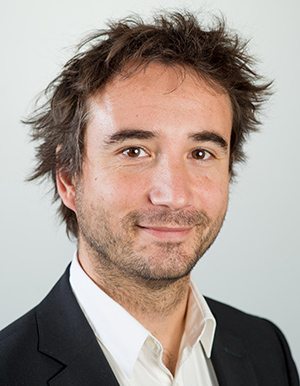 Mischa Dohler
Mischa Dohler
Mischa Dohler is now VP Emerging Technologies at Ericsson Inc. in Silicon Valley, working on cutting-edge topics of 6G, Metaverse, XR, Quantum and Blockchain. He serves on the Technical Advisory Committee of the FCC and on the Spectrum Advisory Board of Ofcom.
He is a Fellow of the IEEE, the Royal Academy of Engineering, the Royal Society of Arts (RSA), the Institution of Engineering and Technology (IET); and a Distinguished Member of Harvard Square Leaders Excellence. He is a serial entrepreneur with 5 companies; composer & pianist with 5 albums on Spotify/iTunes; and fluent in several languages. He has had ample coverage by national and international press and media, and is featured on Amazon Prime.
He is a frequent keynote, panel and tutorial speaker, and has received numerous awards. He has pioneered several research fields, contributed to numerous wireless broadband, IoT/M2M and cyber security standards, holds a dozen patents, organized and chaired numerous conferences, was the Editor-in-Chief of two journals, has more than 300 highly-cited publications, and authored several books. He is a Top-1% Cited Innovator across all science fields globally.
He was Professor in Wireless Communications at King’s College London and Director of the Centre for Telecommunications Research from 2013-2021, driving cross-disciplinary research and innovation in technology, sciences and arts. He is the Cofounder and former CTO of the IoT-pioneering company Worldsensing; cofounder and former CTO of the AI-driven satellite company SiriusInsight.AI, and cofounder of the sustainability company Movingbeans. He also worked as a Senior Researcher at Orange/France Telecom from 2005-2008.
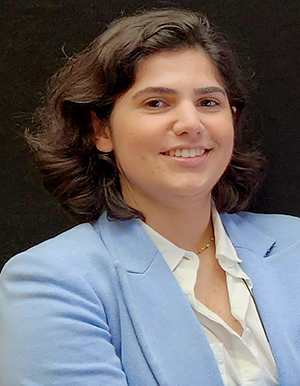 Christina Chaccour
Christina Chaccour
Dr. Christina Chaccour, a professional research scientist, engineer, and entrepreneur, currently serves as a Network Solutions Manager at Ericsson Inc. In her role, Dr. Chaccour seamlessly bridges product solutions and research, spearheading developments in 5G Advanced, 6G networks, and AI-integrated solutions while ensuring the responsible and innovative use of AI, addressing both policy and technical dimensions. Dr. Chaccour actively represents Ericsson as a delegate in prominent industrial bodies, including 5G Americas, Next G Alliance, and WinnForum. With a Ph.D. in Electrical Engineering from Virginia Tech, her academic journey yielded significant contributions, particularly in 6G systems at THz frequencies for next-gen XR and holographic systems, her work also laid the groundwork for pioneering research in AI-native networks and semantic communications.
Dr. Chaccour was awarded the Best Paper at the 10th IFIP Conference on New Technologies, Mobility, and Security (NTMS) in 2019. Her paper in IEEE Communication Surveys and Tutorials was also featured in the prestigious Top Access article listing from June to November 2022. In 2021, she was honored with the Exemplary Reviewer Award from IEEE Transactions on Communications, a distinction given to fewer than 2% of reviewers. Furthermore, Dr. Chaccour's remarkable achievements extend to being named among the "Top 100 Brilliant and Inspiring Women in 6G" in 2024. Additionally, Dr. Chaccour co-founded the startup “Internet of Trees”, which has received numerous local and international awards.
T13: Wireless Immersive Video Streaming: Methods and Techniques
Speakers: Ying Cui (The Hong Kong University of Science and Technology-Guangzhou Campus & The Hong Kong University of Science and Technology, China); Zhi Liu (The University of Electro-Communications, Japan); Derrick Wing Kwan Ng (University of New South Wales, Australia)
Abstract: Immersive video, such as multi-view video, 360 video, and point cloud video, provides immersive experiences and is rapidly gaining popularity. Wireless immersive video streaming is exceptionally challenging due to the large video size, rapidly varying user channel conditions and viewing angles, and limited wireless spectrum. However, wireless communications, multimedia signal processing, optimization, and learning techniques bring new opportunities to improve the wireless streaming performance of immersive video. This tutorial intends to demonstrate the theoretical and practical values of advanced wireless communications techniques, multimedia signal processing techniques, joint optimization of computing and communications resources, and cross-layer design in enabling wireless immersive video streaming. To begin with, this tutorial introduces the fundamentals of wireless immersive video streaming. In addition, this tutorial presents viewing angle prediction and modeling techniques for immersive video. Furthermore, this tutorial presents wireless immersive video streaming techniques. In conclusion, this tutorial discusses opportunities and challenges.
Bios
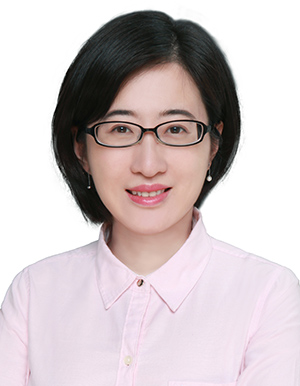 Ying Cui
Ying Cui
Ying Cui received her B.Eng degree in Electronic and Information Engineering from Xi’an Jiao Tong University, China, in 2007, and her Ph.D. degree from the Hong Kong University of Science and Technology, Hong Kong SAR, China, in 2012. She held visiting positions at Yale University, US, in 2011 and Macquarie University, Australia, in 2012. From June 2012 to June 2013, she was a postdoctoral research associate at Northeastern University, US. From July 2013 to December 2014, she was a postdoctoral research associate at the Massachusetts Institute of Technology, US. From January 2015 to July 2022, she was an associate professor at Shanghai Jiao Tong University, China. Since August 2022, she has been an associate professor with the IoT Thrust at The Hong Kong University of Science and Technology (Guangzhou), China, and an affiliate associate professor with the ECE Department at The Hong Kong University of Science and Technology, Hong Kong SAR, China. She has published over 80 papers in prestigious IEEE journals and 70 papers in leading IEEE conferences. She was selected to the National Young Talent Program of China in 2014 and the World's Top 2% Scientists of the year 2023. She received Best Paper Awards from IEEE ICC 2015 and IEEE GLOBECOM 2021. She serves as an Editor for the IEEE Transactions on Wireless Communications.
Zhi Liu
Zhi Liu received the Ph.D. degree in informatics in National Institute of Informatics. He is currently an Associate Professor at The University of Electro-Communications. His research interest includes video network transmission and mobile edge computing. He is now an editorial board member of IEEE Transactions on Multimedia. He is a senior member of IEEE.
T14: Reconfigurable Intelligent Surfaces: Advanced Algorithms, Challenges, and the Road Ahead
Speakers: Aria Nosratinia (University of Texas, Dallas, USA); Bharath Shamasundar (Samsung R&D Institute India - Bangalore (SRIB), India)
Abstract: Reconfigurable intelligent surfaces (RIS) are passive controllable arrays of small reflectors that direct electromagnetic energy towards or away from the target nodes, thereby allowing better management of signals and interference in a wireless network. RIS constitutes a promising future component of wireless systems for 6G and beyond, due to scalability and economic viability, as well as controlling the wireless medium leading to increased capacity and energy efficiency. The tutorial starts from the foundations, and moves on to address the latest developments in the field of RIS, including advanced algorithms. One of the key components in all advanced RIS algorithms is the acquisition and use of channel state information, which receives comprehensive treatment in this tutorial. A variety of advanced methods and algorithms, such as element grouping, infrequent updates, opportunistic RIS, and machine learning methods, will be discussed. The tutorial includes a comprehensive discussion of RIS application space as well as open problems. The tutorial includes coverage of RIS applications in space and satellite communications industries, for which Colorado is a national hub. Therefore it is both timely and a great match for ICC 2024.
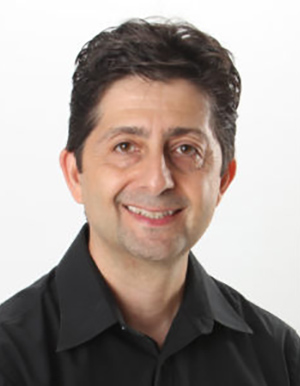 Aria Nosratinia
Aria Nosratinia
Aria Nosratinia (M’97,SM’04,F’10) is Erik Jonsson Distinguished Professor and associate head of the department of electrical and computer engineering at the University of Texas at Dallas. He received his Ph.D. in Electrical and Computer Engineering from the University of Illinois at Urbana-Champaign in 1996. He has held visiting appointments at Princeton University, Rice University, and UCLA. His interests lie in the broad area of information theory and signal processing, with applications in wireless communications, machine learning, and data security and privacy. Dr. Nosratinia is a fellow of IEEE for contributions to multimedia and wireless communications. He has served as editor and area editor for the IEEE Transactions on Wireless Communications, and editor for the IEEE Transactions on Information Theory, IEEE Transactions on Image Processing,, IEEE Signal Processing Letters, IEEE Wireless Communications (Magazine), and Journal of Circuits, Systems, and Computers. He has received the National Science Foundation career award, and the outstanding service award from the IEEE Signal Processing Society, Dallas Chapter. He has served as the secretary of the IEEE information theory society, treasurer for ISIT, publications chair for the IEEE Signal Processing Workshop, as well as member of the technical committee for a number of conferences. He was named a highly cited researcher by Clarivate Analytics (formerly Thomson Reuters).
THURSDAY JUNE 13 - MORNING SESSION (8:30 - 12:30)
T15: Open AI Cellular (OAIC): An Open-Source AI-Enhanced O-RAN Platform & Framework Enabling 6G Wireless Research
Speakers: Minglong Zhang and Vuk Marojevic (Mississippi State University, USA); Vijay K. Shah (George Mason University, USA); Bo Tang (WPI, Italy)
Abstract: Since first conceptualized and proposed, the Open Radio Access Network (O-RAN) has aimed for openness, intelligence and flexibility. To fulfill the objectives, various network components and interfaces will have been virtualized and disaggregated. Meanwhile, O-RAN based 6G networks will incorporate artificial intelligence (AI) into the deployment, operation, and maintenance of the network. AI can optimize parameters in a large search space, figure out corresponding solutions for new situations, as well as interpolate while facing insufficient information. This tutorial will introduce the open-source software platform Open AI Cellular (OAIC), a community research infrastructure project enabling 6G wireless research and experiments. OAIC enables prototyping and testing of next generation AI-based cellular radio access networks (RANs). We will introduce how to design and integrate AI-based RAN controllers, such as user/resource scheduling and network slicing. The tutorial will also highlight methodologies for developing open-source tools and services for AI-enabled O-RAN management and experimentation with software-defined radios (SDRs) along with an AI-enhanced RAN testing framework for 6G research. Attendees will obtain substantial knowledge and experience with O-RAN fundamentals and the emerging OAIC research platform and how to use it for wireless research and development.
Bios
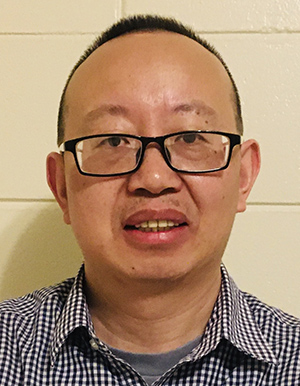 Minglong Zhang
Minglong Zhang
Minglong Zhang received the M.S. degree from Peking University, Beijing, China, in 2011, and the Ph.D. degree from Auckland University of Technology, Auckland, New Zealand, in 2020. From 2011 to 2016, he was a Research Assistant with The Chinese University of Hong Kong, Hong Kong. He was a Postdoctoral Research Fellow and a Lecturer with the Department of Electrical and Electronic Engineering, Auckland University of Technology. He is currently a Research Assistant Professor with Mississippi State University, Starkville, MS, USA. His research interests include O-RAN networks, 5G/6G V2X communications, artificial intelligence, and wireless communications and networks.
 Vuk Marojevic
Vuk Marojevic
Vuk Marojevic is an associate professor in Electrical and Computer Engineering at Mississippi State University, Starkville, MS, USA. He graduated from University of Hannover, Germany, and Barcelona Tech (UPC), Spain, with an MS and a Ph.D in electrical engineering. He is a principal investigator of the US National Science Foundation projects AERPAW and Open Artificial Intelligence Cellular (OAIC). His research interests include mobile communications, software radio, spectrum sharing, wireless testbeds and testing, and wireless security with application to mission-critical communications, the open radio access network (O-RAN), and unmanned aircraft systems.
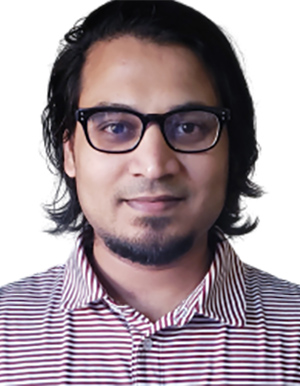 Vijay K. Shah
Vijay K. Shah
Vijay K. Shah is currently an Assistant Professor in the Cybersecurity Engineering Department at George Mason University, Virginia, USA. Dr. Shah serves as the director of NextG Wireless Lab@GMU, which conducts fundamental research on next-generation wireless communications and networking, with a focus on 5G/NextG networks, Open RAN, wireless security, and wireless testbed prototyping. Dr. Shah's research has been generously supported by several federal and state agencies, including NSF, NIST, NTIA and CCI. He has served as an organizing co-chair for IEEE GLOBECOM workshop on Next-generation Radio Access Networks (NextGenRAN) 2022.
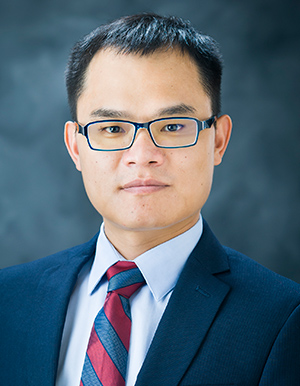 Bo Tang
Bo Tang
Dr. Bo Tang is an Associate Professor in the Department of Electrical and Computer Engineering at Worcester Polytechnic Institute. Prior to this, he was an Assistant Professor in the Department of Electrical and Computer Engineering at Mississippi State University. He received the Ph.D. degree in electrical engineering from University of Rhode Island (Kingstown, RI) in 2016. His research interests lie in the general areas of bio-inspired artificial intelligence (AI), AI security, edge AI, and their applications in Cyber-Physical Systems (e.g., wireless networks, autonomous vehicles, and power systems). He is currently an Associate Editor for IEEE Transactions on Neural Networks and Learning Systems.
T16: Learning Methods for Beyond 5G Communications, Localization, and Sensing
Speakers: Kumar Vijay Mishra (United States DEVCOM Army Research Laboratory, USA); Ahmet M Elbir (University of Luxembourg, Luxembourg)
Abstract: The design of future communications and sensing systems entails several tasks such as transmitter signal selection, precoder design, receive processing, channel estimation, tracking, or resource allocation to name a few. This often requires solving difficult nonconvex optimization problems that involve either a common performance metric as a cost function or the inclusion of several constraints related to the employed sensing and communications regime. There is no standard methodology for solving such problems. In this context, learning techniques provide robust performance at an upfront training cost. Moreover, full exploitation of similarities between sensing and communication channels when operating at different frequencies, either for communication-aided sensing or sensing-aided communication, would require extremely complicated models accounting for propagation differences, potential antenna differences, or calibrations to compensate for different locations of sensor and communication modules. Learning strategies can also become the preferred solution in this case, where the mathematical models are unknown and would potentially require excessive complexity. In this tutorial, the audience will learn about applying learning to various aspects of hybrid beamforming including channel estimation, antenna selection, wideband beamforming, and spatial modulation. In addition, we will examine these concepts in the context of joint radar-communications architectures.
Bios
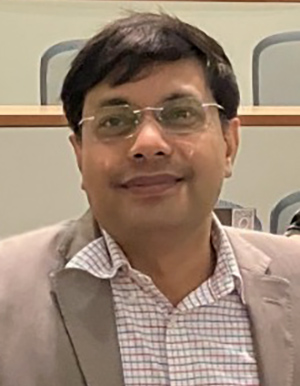 Kumar Vijay Mishra
Kumar Vijay Mishra
Kumar Vijay Mishra (S’08-M’15-SM’18) obtained a Ph.D. in electrical engineering and M.S. in mathematics from The University of Iowa in 2015, and M.S. in electrical engineering from Colorado State University in 2012, while working on NASA’s Global Precipitation Mission Ground Validation (GPM-GV) weather radars. He received his B. Tech. summa cum laude (Gold Medal, Honors) in electronics and communication engineering from the National Institute of Technology, Hamirpur (NITH), India in 2003. He is currently Research Scientist at the Institute for Systems Research, The University of Maryland, College Park under the ARL-ArtIAMAS program; Technical Adviser to Singapore-based automotive radar start-up Hertzwell and Boston-based imaging radar startup Aura Intelligent Systems; and honorary Research Fellow at SnT - Interdisciplinary Centre for Security, Reliability and Trust, University of Luxembourg. Previously, he had research appointments at the United States Army Research Laboratory (ARL), Adelphi; Electronics and Radar Development Establishment (LRDE), Defence Research and Development Organisation (DRDO) Bengaluru; IIHR - Hydroscience & Engineering, Iowa City, IA; Mitsubishi Electric Research Labs, Cambridge, MA; Qualcomm, San Jose; and Technion - Israel Institute of Technology.
Dr. Mishra is the Distinguished Lecturer of the IEEE Communications Society (2023-2024), IEEE Aerospace and Electronic Systems Society (AESS) (2023-2024), IEEE Vehicular Technology Society (2023-2024), IEEE Geoscience and Remote Sensing Society (2024-2025), and IEEE Future Networks Initiative (2022). He is the recipient of the IET Premium Best Paper Prize (2021), IEEE T-AES Outstanding Editor (2021), U. S. National Academies Harry Diamond Distinguished Fellowship (2018-2021), American Geophysical Union Editors' Citation for Excellence (2019), Royal Meteorological Society Quarterly Journal Editor's Prize (2017), Viterbi Postdoctoral Fellowship (2015, 2016), Lady Davis Postdoctoral Fellowship (2017), DRDO LRDE Scientist of the Year Award (2006), NITH Director’s Gold Medal (2003), and NITH Best Student Award (2003). He has received Best Paper Awards at IEEE MLSP 2019 and IEEE ACES Symposium 2019.
Dr. Mishra is Chair (2023-present) of the Synthetic Apertures Technical Working Group of the IEEE Signal Processing Society (SPS) and Vice-Chair (2021-present) of the IEEE Synthetic Aperture Standards Committee, which is the first SPS standards committee. He is the Chair (2023-2026) of the International Union of Radio Science (URSI) Commission C. He has been an elected member of three technical committees of IEEE SPS: SPCOM, SAM, and ASPS, and IEEE AESS Radar Systems Panel. He has been Associate Editor of IEEE Transactions on Aerospace and Electronic Systems (2020-) and IEEE Transactions on Antennas and Propagation (2023-). He has been a lead/guest editor of several special issues in journals such as IEEE Signal Processing Magazine, IEEE Journal of Selected Topics in Signal Processing, IEEE Journal on Selected Areas in Communications, and IEEE Journal of Selected Topics in Applied Earth Observations and Remote Sensing. He is the lead co-editor of three upcoming books on radar: Signal Processing for Joint Radar-Communications (Wiley-
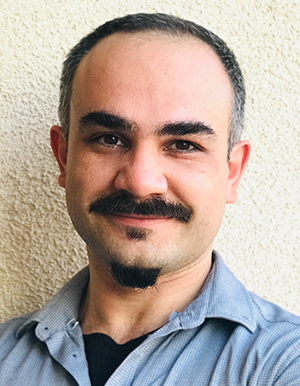 Ahmet M. Elbir
Ahmet M. Elbir
Ahmet M. Elbir (Senior Member, IEEE) received the B.S. degree with Honors from Firat University in 2009, and the Ph.D. degree from the Middle East Technical University (METU) in 2016, both in electrical engineering. He is currently a Research Fellow at University of Luxembourg. He is also a Research Associate at King Abdullah University of Science and Technology (KAUST) since 2023. In the past, Dr Elbir has held Visiting Postdoctoral Researcher positions at Koc University in 2020-2021, Carleton University in 2022-2023, and the University of Hertfordshire in 2021-2023. In 2016-2022, he worked as a Senior Researcher at Duzce University. His research interests include array signal processing for radar and communications, and deep learning for multi-antenna systems. He has served as an Associate Editor for IEEE Wireless Communications Letters, and a Lead Guest Editor for IEEE Journal of Selected Topics in Signal Processing, IEEE Signal Processing Magazine and IEEE Wireless Communications. Dr. Elbir is the recipient of the 2016 METU Best Ph.D. thesis award for his doctoral studies, the 2022 IEEE Turkey Section Research Encouragement Award, and the IET Radar, Sonar & Navigation Best Paper Award in 2022.
T17: When the Sensing sphere touches Communication and Electromagnetism: The academic, industrial and standard perspectives
Speakers: Vincenzo Sciancalepore (NEC Laboratories Europe GmbH, Germany); Gabriele Gradoni (University of Surrey, United Kingdom (Great Britain); Marco Di Renzo (CNRS & Paris-Saclay University, France)
Abstract: The tutorial explores HoloS's distinct features compared to conventional MIMO, covering electromagnetic, communication, and signal processing aspects. It also delves into mathematical tools like compact self-adjoint operators, Landau's eigenvalues, and Kolmogorov's n-widths. This material is essential for Electromagnetic Signal and Information Theory (ESIT), an interdisciplinary field focusing on electromagnetic field math and information processing in communication systems. This tutorial will also focus on advanced electromagnetic modelling for complex propagation channels that are of paramount importance in joint communication and sensing. The material will cover fundamental methods developed in mathematical physics to design and analyze the communication assisted by reconfigurable meta-surfaces (including RIS and HoloS), in environments supporting rich multipath fading in terrestrial mobile networks (TNs).
 Gabriele Gradoni
Gabriele Gradoni
Gabriele Gradoni received the Ph.D. degree in electromagnetics from Universita Politecnica delle Marche, Ancona, Italy, in 2010. He was a Visiting Researcher with the Time, Quantum, and Electromagnetics Team, National Physical Laboratory, in 2008. From 2010 to 2013, he was a Research Associate with the Institute for Research in Electronics and Applied Physics, University of Maryland, College Park, MD, USA. From 2013 to 2016, he was a Research Fellow with the School of Mathematical Sciences, University of Nottingham, U.K., where he became a Full Professor of applied mathematics and electromagnetics engineering in 2022. In May 2023, Gabriele joined the Institute for Communication Systems, University of Surrey, as a Full Professor and Chair in Wireless Communications. Currently, he is also an Adjunct Professor with the Department of Electrical and Computer Engineering, University of Illinois at Urbana–Champaign, USA, and a Visiting Fellow with the Department of Computer Science and Technology, University of Cambridge. His research interests include electromagnetic modelling of complex systems, meta-surface modelling, stochastics electrodynamics, channel modelling of terrestrial and non-terrestrial networks, and quantum computational electromagnetics, with applications to wave-based computing and coexistence in modern wireless communication systems. He received several international awards including the URSI Commission B Young Scientist Award in 2010 and 2016, the Gaetano Latmiral Prize in 2015, and the Honourable Mention IEEE TEMC Richard B. Schulz Transactions Prize Paper Award in 2020. From 2014 to 2021, he was the URSI Commission E Early Career Representative. Since 2020, he has been a Royal Society Industry Fellow at British Telecommunications.
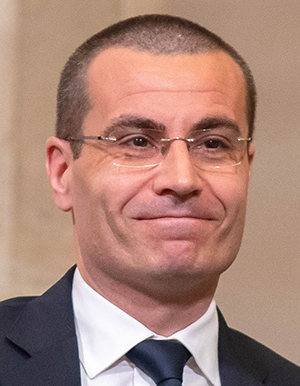 Marco Di Renzo
Marco Di Renzo
Marco Di Renzo (Fellow, IEEE) received the Laurea (cum laude) and Ph.D. degrees in electrical engineering from the University of L’Aquila, Italy, in 2003 and 2007, respectively, and the Habilitation à Diriger des Recherches (Doctor of Science) degree from University Paris-Sud (currently Paris-Saclay University), France, in 2013. Currently, he is a CNRS Research Director (Professor) and the Head of the Intelligent Physical Communications group in the Laboratory of Signals and Systems (L2S) at Paris-Saclay University – CNRS and CentraleSupelec, Paris, France. Also, he is an elected member of the L2S Board Council and a member of the L2S Management Committee, and is a Member of the Admission and Evaluation Committee of the Ph.D. School on Information and Communication Technologies, Paris-Saclay University. He is a Founding Member and the Academic Vice Chair of the Industry Specification Group (ISG) on Reconfigurable Intelligent Surfaces (RIS) within the European Telecommunications Standards Institute (ETSI), where he served as the Rapporteur for the work item on communication models, channel models, and evaluation methodologies. He is a Fellow of the IEEE, IET, EURASIP, and AAIA; an Academician of AIIA; an Ordinary Member of the European Academy of Sciences and Arts, an Ordinary Member of the Academia Europaea; an Ambassador of the European Association on Antennas and Propagation; and a Highly Cited Researcher. Also, he holds the 2023 France-Nokia Chair of Excellence in ICT, he holds the Tan Chin Tuan Exchange Fellowship in Engineering at Nanyang Technological University (Singapore), and he was a Fulbright Fellow at City University of New York (USA), a Nokia Foundation Visiting Professor (Finland), and a Royal Academy of Engineering Distinguished Visiting Fellow (UK). His recent research awards include the 2021 EURASIP Best Paper Award, the 2022 IEEE COMSOC Outstanding Paper Award, the 2022 Michel Monpetit Prize conferred by the French Academy of Sciences, the 2023 EURASIP Best Paper Award, the 2023 IEEE ICC Best Paper Award, the 2023 IEEE COMSOC Fred W. Ellersick Prize, the 2023 IEEE COMSOC Heinrich Hertz Award, the 2023 IEEE VTS James Evans Avant Garde Award, and the 2023 IEEE COMSOC Technical Recognition Award from the Signal Processing and Computing for Communications Technical Committee. He served as the Editor-in-Chief of IEEE Communications Letters during the period 2019-2023, and he is now serving in the Advisory Board. He currently serving as a Voting Member of the Fellow Evaluation Standing Committee and as the Director of Journals of the IEEE Communications Society.
T18: Empowering Artificial Intelligence-Generated Content (AIGC) with Mobile Edge Networks
Speakers: Dusit Niyato (Nanyang Technological University, Singapore); Hoang Thai Dinh (University of Technology Sydney (UTS), Australia); Zehui Xiong (Singapore University of Technology and Design, Singapore)
Abstract: Artificial Intelligence-Generated Content (AIGC) is an emerging term refering to systems that leverage AI to automatically create innovative content for users. Unlike conventional AI applications, e.g., autonomous cars and smart homes, AIGC can leverage the information it learned to create completely new digital content that has never been seen before, e.g., new images, text, and videos. Therefore, the development of AIGC is expected to open a digital revolution where digital content is not only created by humans but also by intelligent AI algorithms.
The main objective of this tutorial is to provide the fundamental background of AIGC and then study recent advances in mobile edge networks to address the practical challenges of AIGC. In particular, we first give a tutorial on AIGC from basic concepts for the life-cycle of mobile AIGC networks. We then introduce technologies and infrastructure for the future development of mobile AGIC networks. After that, we discuss how to deploy AIGN at mobile edge networks together with its practical challenges. Finally, we highlight important challenges, open issues, and future research directions of AIGC.
Bios
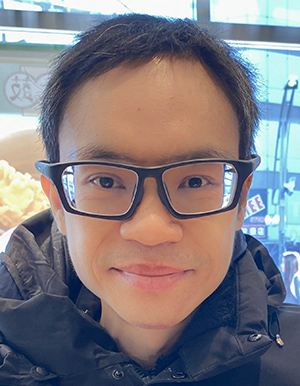 Dusit Niyato
Dusit Niyato
Dusit Niyato is currently a President's Chair Professor in Computer Science and Engineering in the School of Computer Science and Engineering, Nanyang Technological University, Singapore. He received B.E. from King Mongkuk’s Institute of Technology Ladkrabang (KMITL), Thailand in 1999 and Ph.D. in Electrical and Computer Engineering from the University of Manitoba, Canada in 2008. Dusit's research interests are in the areas of distributed collaborative machine learning, Internet of Things (IoT), edge intelligent generative AI and AI-generated content (AIGC), mobile and distributed computing, and wireless networks. Dusit is serving as Editor-in-Chief of IEEE Communications Surveys and Tutorials (impact factor of 35.6 for 2023), an area editor of IEEE Transactions on Vehicular Technology, editor of IEEE Transactions on Wireless Communications, associate editor of IEEE Internet of Things Journal, IEEE Transactions on Mobile Computing, IEEE Wireless Communications, IEEE Network, IEEE Transactions on Information Forensics and Security (TIFS), and ACM Computing Surveys. He was a guest editor of IEEE Journal on Selected Areas on Communications. He is the Members-at-Large to the Board of Governors of IEEE Communications Society for 2024-2026, and was a Distinguished Lecturer of the IEEE Communications Society for 2016-2017. He was named the 2017-2023 highly cited researcher in computer science. He is a Fellow of IEEE and a Fellow of IET.
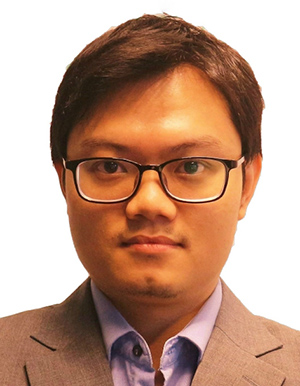 Dinh Thai Hoang
Dinh Thai Hoang
Dinh Thai Hoang (M’16, SM’22) is currently a faculty member at the School of Electrical and Data Engineering, University of Technology Sydney, Australia. He received his Ph.D. in Computer Science and Engineering from the Nanyang Technological University, Singapore 2016. His research interests include emerging wireless communications and networking topics, especially machine learning applications in networking, edge computing, and cybersecurity. He has received several precious awards, including the Australian Research Council Discovery Early Career Researcher Award, IEEE TCSC Award for Excellence in Scalable Computing for Contributions on “Intelligent Mobile Edge Computing Systems” (Early Career Researcher), IEEE Asia-Pacific Board (APB) Outstanding Paper Award 2022, and IEEE Communications Society Best Survey Paper Award 2023. He is currently an Editor of IEEE TMC, IEEE TWC, IEEE TCCN, IEEE TVT, and IEEE COMST.
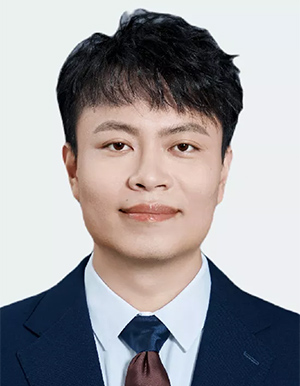 Zehui Xiong
Zehui Xiong
Zehui Xiong is currently an Assistant Professor at Singapore University of Technology and Design, and also an Honorary Adjunct Senior Research Scientist with Alibaba-NTU Singapore Joint Research Institute, Singapore. He received the PhD degree in Nanyang Technological University (NTU), Singapore. He was the visiting scholar at Princeton University and University of Waterloo. His research interests include wireless communications, Internet of Things, blockchain, edge intelligence, and Metaverse. Recognized as a Highly Cited Researcher, he has published more than 200 research papers in leading journals and flagship conferences. He has won over 10 Best Paper Awards in international conferences and is listed in the World’s Top 2% Scientists identified by Stanford University. He is now serving as the editor or guest editor for many leading journals including IEEE Journal on Selected Areas in Communications, IEEE Transactions on Vehicular Technology, IEEE Internet of Things Journal, IEEE Transactions on Cognitive Communications and Networking, and IEEE Transactions on Network Science and Engineering. He is the recipient of IEEE Early Career Researcher Award for Excellence in Scalable Computing, IEEE Technical Committee on Blockchain and Distributed Ledger Technologies Early Career Award, IEEE Internet Technical Committee Early Achievement Award, IEEE TCSVC Rising Star Award, IEEE TCI Rising Star Award, IEEE TCCLD Rising Star Award, IEEE Best Land Transportation Paper Award, IEEE CSIM Technical Committee Best Journal Paper Award, IEEE SPCC Technical Committee Best Paper Award, IEEE VTS Singapore Best Paper Award, Chinese Government Award for Outstanding Students Abroad, and NTU SCSE Best PhD Thesis Runner-Up Award. He is now serving as the Associate Director of Future Communications R&D Programme. In 2023, he was featured on the list of Forbes Asia 30 under 30.
T19: 6G waveforms designs and options
Speaker: Huseyin Arslan (Istanbul Medipol University, USA)
Abstract: A fundamental part of any wireless communication standard is the PHY/MAC design. In this regard, the current OFDM technology has enjoyed unprecedented success with it being the only waveform being used for multiple generations of cellular systems (albeit with the introduction of multiple numerologies). However, given its limitations in terms of satisfying the new requirements, it is high time to look at potential alternatives for 6G PHY. Accordingly, in this presentation, we will identify the waveform design criteria for the upcoming 6G standards. The potential directions and research opportunities to address the challenges and requirements of the 6G vision will be discussed.
Bio
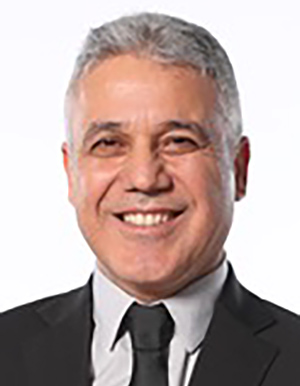 Huseyin Arslan
Huseyin Arslan
Dr. Arslan (IEEE Fellow, NAI Fellow, Member of Turkish Academy of Science) received his BS degree from the Middle East Technical University (METU), Ankara, Turkey in 1992; his MS and Ph.D. degrees were received respectively in 1994 and 1998 from Southern Methodist University (SMU), Dallas, TX. From January 1998 to August 2002, he was with the research group of Ericsson, where he was involved with several projects related to 2G and 3G wireless communication systems. Between August 2002 and August 2022, he was with the Electrical Engineering Department, at the University of South Florida, where he was a Professor. In December 2013, he joined Istanbul Medipol University to found the Engineering College, where he has been working as the Dean of the School of Engineering and Natural Sciences. In addition, he has worked as a part-time consultant for various companies and institutions including Anritsu Company, Savronik Inc., and The Scientific and Technological Research Council of Turkey. Dr. Arslan served as the founding Chairman of The Board Of Directors of ULAK Communication company, which is the Turkish telecom equipment provider. He was also the member of the Tubitak Scientific Board. Since May 2021, he is serving as a Member of the Board of Directors for Turkcell, the biggest cellular operator in Turkey while also operating in Ukrain, Belarus, and Cyprus.
Dr. Arslan conducts research in wireless systems, with emphasis on the physical and medium access layers of communications. His current research interests are on 6G and beyond radio access technologies, physical layer security, interference management (avoidance, awareness, and cancellation), cognitive radio, multi-carrier wireless technologies (beyond OFDM), dynamic spectrum access, co-existence issues, non-terrestial communications (High Altitude Platforms), joint radar (sensing) and communication designs. Dr. Arslan has been collaborating extensively with key national and international industrial partners and his research has generated significant interest in companies such as InterDigital, Anritsu, NTT DoCoMo, Raytheon, Honeywell, Aselsan, Vestel,Türkcell, Keysight technologies. Collaborations and feedback from industry partners has significantly influenced his research. In addition to his research activities, Dr. Arslan has also contributed to wireless communication education. He has integrated the outcomes of his research into education which lead him to develop a number of courses at the University of South Florida and Istanbul Medipol University. He has developed a unique “Wireless Systems Laboratory” course (funded by the National Science Foundation and Keysight technologies) where he was able to teach not only the theory but also the practical aspects of wireless communication system with the most contemporary test and measurement equipment.
Dr. Arslan has served as general chair, technical program committee chair, session and symposium organizer, workshop chair, and technical program committee member in several IEEE conferences. He is currently a member of the editorial board for the IEEE Surveys and Tutorials and the Sensors Journal. He has also served as a member of the editorial board for the IEEE Transactions on Communications, the IEEE Transactions on Cognitive Communications and Networking (TCCN), and several other scholarly journals by Elsevier, Hindawi, and Wiley Publishing.
T20: Unleashing the Potential: Post-Shannon Paradigms in Future Communication Systems
Speakers: Rafael F. Schaefer (Technische Universität Dresden, Germany); Christian Deppe (Technical University of Munich, Germany); Holger Boche (Technical University Munich, Germany); Frank H.P. Fitzek (Technische Universität Dresden & ComNets - Communication Networks Group, Germany)
Abstract: Current communication systems are designed following the Shannon paradigm. Here, the maximum number of possible messages that can be transmitted scales exponentially with the blocklength of the codewords. For future communication systems, we advocate a paradigm change towards Post-Shannon communication that allows the encoding of messages whose maximum number scales double-exponentially with the blocklength! In addition, secrecy comes "for free" in the sense that it can be incorporated without penalizing the transmission rate! This paradigm shift is the study of semantic communication instead of message only transmission. It involves a shift from the traditional design of message transmission to a new Post-Shannon design that takes the semantics of the communication into account going beyond the transmission of pure message bits. This paradigm change can bring not only marginal but also exponential gains in the efficiency of communication. Further key enabler for future communication systems are molecular communication with the identification capacity as an alternative metric and also joint communication and sensing that enables a tight integration of communication (and identification, respectively) and sensing. Accordingly, within the Post-Shannon framework, this tutorial explores identification codes, molecular communication, and the concept of joint communication, identification, and sensing.
Bios
 Christian Deppe
Christian Deppe
Christian Deppe received his Dipl.-Math. degree in mathematics from the University of Bielefeld in 1996 and his Dr.-Math. degree, also from the University of Bielefeld, in 1998. He then worked there until 2010 as a research associate and assistant at the Faculty of Mathematics, Bielefeld. In 2011, he took over the management of the project "Safety and Robustness of the Quantum Repeater" from the Federal Ministry of Education and Research at the Faculty of Mathematics, Bielefeld University, for two years. In 2014, Christian Deppe was funded by a DFG project at the Chair of Theoretical Information Technology, Technical University of Munich. At the Friedrich Schiller University in Jena, Christian Deppe took up a temporary professorship at the Faculty of Mathematics and Computer Science in 2015. Until 2023, he worked for six years at the Chair of Communications Engineering at the Technical University of Munich and since January 2024 has taken on new tasks at the Institute of Communications Engineering at the TU Braunschweig. He is project leader of several projects funded by the BMBF and the DFG.
T21: Generative AI for Future Wireless Communications: Innovations, Challenges, Future Directions
Speakers: Songyang Zhang (University of Louisiana at Lafayette, USA); Zhi Ding (University of California at Davis, USA)
Abstract: The recent wave of progress in generative artificial intelligence (AI) has stimulated numerous novel concepts and achieved phenomenal successes in modern applications, including ChatGPT. Beyond its critical role in content generation for computer vision and natural language processing, generative AI presents profound opportunities and unlimited potential in wireless communications and networking. In this tutorial, we systematically address the tremendous potential and opportunities presented by the emergence and integration of generative AI in high-efficiency and contextual communication networks. We provide three specific system designs for fundamental future wireless communication systems. Our first tutorial emphasis focuses on the integration of data-driven generative AI models with basic physical radio networks to enhance the efficiency in wireless networks, including examples of radio coverage estimation and localization. Our second emphasis focuses on the major role that generative AI can play in federated learning for effective mobile edge computing in distributed and cooperative learning over wireless networks for bandwidth-efficiency and strong user privacy. Our third and the forward-looking topic presents a transformative design of future semantic/contextual communication framework enabled by generative models of stable diffusion. For each topic, we shall deliver clear design and implementation steps, analyze properties and performances, and expand on potential future extensions.
Bios
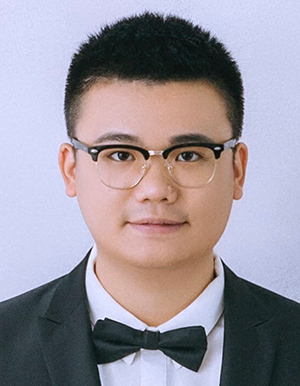 Songyang Zhang
Songyang Zhang
Songyang Zhang received the Ph.D. degree in Department of Electrical and Computer Engineering from the University of California at Davis, Davis, CA, USA, in 2021, where he was a Postdoctoral Research Associate from August 2021 to July 2023. He is currently an Assistant Professor with the Department of Electrical and Computer Engineering in University of Louisiana at Lafayette, Lafayette, LA, USA. His current research interests include machine learning, signal processing, IoT intelligence and wireless communication. He received the Best Paper Finalist in the 2020 IEEE International Conference on Image Processing, and was recognized as the Best TCSVT Reviewer of 2022 by IEEE Circuits and System Society.
THURSDAY JUNE 13 - AFTERNOON SESSION (13:30 - 17:30)
T22: Wireless Information and Energy Transfer in the Era of 6G Networks
Speakers: Ioannis Krikidis and Constantinos Psomas (University of Cyprus, Cyprus)
Abstract: Conventional energy-constrained wireless systems such as sensor networks are powered by batteries and have limited lifetime. Wireless power transfer (WPT) is a promising technology for energy sustainable networks, where terminals can harvest energy from dedicated electromagnetic radiation through appropriate electronic circuits. The integration of WPT technology into communication networks introduces a fundamental co-existence of information and energy flows; radio-frequency signals are used in order to convey information and/or energy. The efficient management of these two flows through sophisticated networking protocols, signal processing/communication techniques and network architectures, gives rise to a new communication paradigm called wireless powered communications (WPC). In this tutorial, we discuss the principles of WPC and we highlight its main network architectures as well as the fundamental trade-off between information and energy transfer. Several examples, which deal with the integration of WPC in modern communication systems, are presented. Specifically, we study some fundamental network structures such as the MIMO broadcast channel, the interference channel, the relay channel, the multiple-access channel, and ad-hoc networks. The integration of WPC in 6G and beyond is analyzed and discussed through the use of tools from stochastic geometry. Future research directions and challenges are also pointed out.
Bios
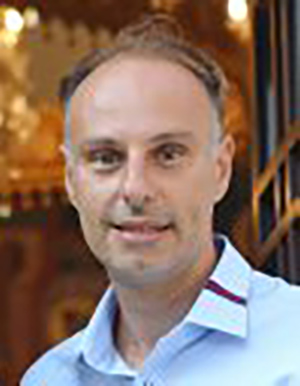 Ioannis Krikidis
Ioannis Krikidis
Dr. Ioannis Krikidis received the diploma in Computer Engineering from the Computer Engineering and Informatics Department (CEID) of the University of Patras, Greece, in 2000, and the M.Sc and Ph.D degrees from Ecole Nationale Superieure des Telecommunications (ENST), Paris, France, in 2001 and 2005, respectively, all in electrical engineering. From 2006 to 2007 he worked, as a Post-Doctoral researcher, with ENST, Paris, France, and from 2007 to 2010 he was a Research Fellow in the School of Engineering and Electronics at the University of Edinburgh, Edinburgh, UK. He is currently a Professor at the Department of Electrical and Computer Engineering, University of Cyprus, Nicosia, Cyprus. He is an IEEE Fellow for contributions to full-duplex radio and wireless-powered communications. His current research interests include wireless communications, cooperative networks, 5G/6G communication systems, wireless powered communications, and secrecy communications. Dr. Krikidis serves as an Associate Editor for IEEE Transactions on Wireless Communications, and as an Editor-at-Large for the IEEE Open Journal of the Communications Society; he is also a Senior Editor for IEEE Wireless Communications Letters. He has published over 300 papers in scientific journals and international conferences. He was the recipient of the Research Award Young Researcher from the Research Promotion Foundation, Cyprus, in 2013, as well as the recipient of the IEEE ComSoc Best Young Professional Award in Academia in 2016. He has been recognized by Thomson Reuters as an ISI Highly Cited Researcher 2017, 2018, 2019, 2020, and 2021.
 Constantinos Psomas
Constantinos Psomas
Dr. Constantinos Psomas holds the B.Sc. degree in computer science and mathematics from the Royal Holloway, University of London, the M.Sc. degree in applicable mathematics from the London School of Economics, and the Ph.D. degree in mathematics from The Open University, U.K.. From 2011 to 2014, he was as a Post-Doctoral Research Fellow with the Department of Electrical Engineering, Computer Engineering and Informatics, Cyprus University of Technology. He is currently a Research Fellow with the Department of Electrical and Computer Engineering, University of Cyprus. His current research interests include wireless powered communications, intelligent reflecting surfaces, and reconfigurable antenna systems. He received the Exemplary Reviewer Certificate from the IEEE Transactions on Communications for 2020 and the IEEE Wireless Communications Letters for 2015 and 2018. He serves as an Associate Editor for the IEEE Wireless Communications and the Frontiers in Communications and Networks.
T23: Distributed Machine Learning at Wireless Edge
Speakers: Yue Wang (Georgia State University, USA); Ping Xu (University of Texas Rio Grande Valley, USA); Zhipeng Cai (Georgia State University, USA); Zhi Tian (George Mason University, USA)
Abstract: Smart devices are becoming the workhorse at wireless edge, where valuable data directly collected from the edge environments together with the resurgence of machine learning (ML) stimulate the latest trend of artificial intelligence (AI) at the edge. However, conventional ML methods are centralized in the cloud, which raises communication bottleneck, privacy leakage and security risk. As an emerging trend to take advantage of abundant data and computation resources in edge networks, distributed learning is expected to implement edge AI in NextG wireless systems while keeping raw data locally, which leads to fruitful attempts of AI and ML applications in wireless edge. This tutorial will introduce basic concepts and recent results related to distributed machine learning techniques and their successful applications at wireless edge. We will emphasize new development on distributed learning for high communication-efficiency, robustness, and privacy-preserving. We will focus on employing distributed learning and optimization techniques and integrating them with signal processing and wireless communications. The witness of the recent surge in relevant research and the emergence of many exciting opportunities motivate us to provide a comprehensive introduction to efficient and robust distributed learning at wireless edge and under practical constraints while delineating the potential opportunities, roadblocks, and challenges.
Bios
 Yue Wang
Yue Wang
Dr. Yue Wang is currently an Assistant Professor in the Department of Computer Science at the Georgia State University, Atlanta, GA, since August 2023. Prior to that, he was a Research Assistant Professor in the Electrical and Computer Engineering Department at the George Mason University, Fairfax, VA. His general interests include the interdisciplinary areas of machine learning, signal processing, wireless communications, and their applications in cyber physical systems. His current research focuses on distributed optimization and machine learning, edge computing, sparse signal processing, massive MIMO, mmWave communications, cognitive radios, spectrum sensing, Internet of Things, harmonic retrieval, direction of arrival estimation, and high-dimensional data analysis. He is a Senior Member of IEEE.
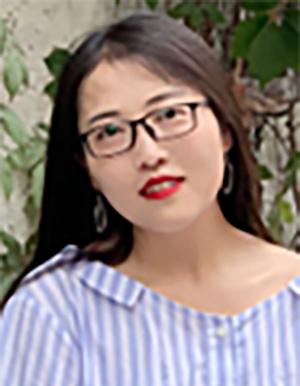 Ping Xu
Ping Xu
Dr. Ping Xu is currently an Assistant Professor at the Electrical and Computer Engineering department of University of Texas Rio Grande Valley. Previously, she was a postdoctoral researcher with the Department of Electrical and Computer Engineering, George Mason University, Fairfax, Virginia. Her research interests span the areas of machine learning and optimization, signal processing, dynamical systems, and cooperative control. She received the award of the Rising Star in EECS in 2022, the Outstanding Academic Achievement Award in GMU in 2022, and the IEEE Signal Processing Society Professional Development Grant in 2021.
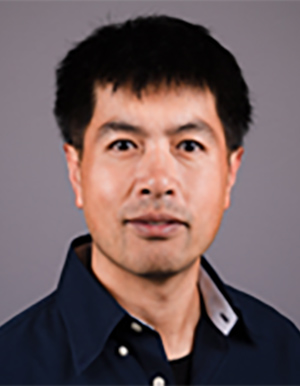 Zhipeng Cai
Zhipeng Cai
Dr. Zhipeng Cai is currently a Professor in the Department of Computer Science and Director in the INSPIRE Center at the Georgia State University. His research expertise lies in the areas of Resource Management and Scheduling, High Performance Computing, Cyber-Security, Privacy, Networking, and Big Data. He is Editor-in-Chief for Wireless Communications and Mobile Computing, and Associate Editor-in-Chief for Elsevier High-Confidence Computing Journal, as well as Editor for various prestigious journals, such as IEEE Transactions on Knowledge and Data Engineering, IEEE Transactions on Vehicular Technology, IEEE Transactions on Wireless Communications, IEEE Internet of Things Journal, and IEEE Transactions on Computational Social Systems. He is the recipient of an NSF CAREER Award. He is a Fellow of IEEE.
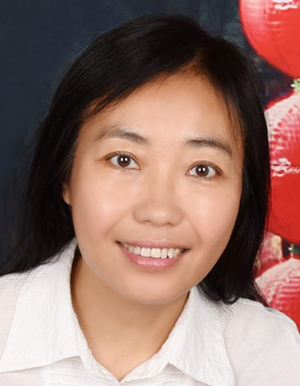 Zhi Tian
Zhi Tian
Dr. Zhi Tian is currently a Professor with the ECE Department of George Mason University since 2015. Prior to that, she was on the faculty of Michigan Technological University from 2000 to 2014. She served as a program director with the U.S. National Science Foundation from 2012 to 2014. Her general interests are in the areas of signal processing, communications, detection and estimation. Her current research focuses on decentralized optimization and learning over networks, statistical inference from distributed data, compressed sensing for random processes, cognitive radios, and millimeter-wave MIMO communications. She served on the Board of Governors of the IEEE Signal Processing Society from 2019 to 2021. She was Chair of the IEEE Signal Processing Society Big Data Special Interest Group, and a member of the IEEE Signal Processing for Communications and Networking Technical Committee. She was a Distinguished Lecturer of both the IEEE Communications Society and the IEEE Vehicular Technology Society. She is Editor-in-Chief for IEEE Transactions on Signal Processing, and served as Associate Editor for IEEE Transactions on Wireless Communications and IEEE Transactions on Signal Processing. She received the IEEE Communications Society TCCN Publication Award in 2018. She is a Fellow of the IEEE.
T24: Holographic MIMO Communications: Fundamentals and Recent Advances
Speakers: Luca Sanguinetti (University of Pisa, Italy); Emil Björnson (KTH Royal Institute of Technology, Sweden)
Abstract: Massive MIMO (multiple-input multiple-output) became a reality in 5G with 64-antenna fully digital base stations becoming commonplace. This technology constitutes a paradigm shift in the design of wireless technology, where the focus shifts from using more spectrum to using the spatial resources more effectively. Since the need for ubiquitous wireless access grows at an exponential pace, the logical consequence is that the array dimensions will continue to grow in the 6G era towards what is known as Holographic MIMO. In this future situation, the arrays are dense and electrically large, to exploit all the maximum spatial degrees of freedom for beamforming and spatial multiplexing. The aim of this tutorial is to cover the fundamentals, recent advances and future research trends of Holographic MIMO.
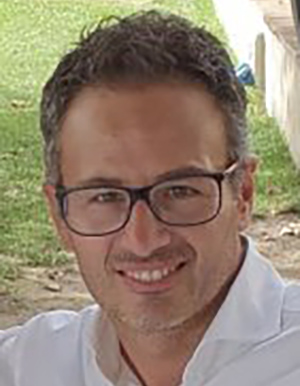 Luca Sanguinetti
Luca Sanguinetti
Prof. Luca Sanguinetti is currently a Full Professor with the Dipartimento di Ingegneria dell’Informazione, University of Pisa. From June 2007 to June 2008, he was a Postdoctoral Associate with the Department of Electrical Engineering, Princeton. From July 2013 to October 2017, he was with the Large Systems and Networks Group (LANEAS), CentraleSupélec, France. He has coauthored two textbooks: ``Massive MIMO Networks: Spectral, Energy, and Hardware Efficiency’’ (2017) and ``Foundations of User-centric Cell-free Massive MIMO’’ (2020). His expertise and general interests span the areas of communications and signal processing. Prof. Sanguinetti received the Marconi Prize Paper Award in Wireless Communications in 2018 and 2022, the IEEE Communications Society Outstanding Paper Award in 2023 and coauthored a paper that received the Young Best Paper Award from the ComSoc/VTS Italy Section. He served as an Associate Editor for IEEE Transactions on Wireless communications, IEEE Signal Processing Letters, and IEEE Journal on Selected Areas of Communications. He was a member of the Executive Editorial Committee of IEEE Transactions on Wireless Communications. He is currently serving as an Associate Editor for the IEEE Transactions on Communications and is a member of the Steering Committee of IEEE Transactions on Wireless Communications. He is an IEEE Senior Member.
T25: Intelligent Synchronization for Complex Networked Systems in the 6G Era: Challenges, Recent Advancements, and Future Directions
Speakers: Xianbin Wang and Pengyi Jia (Western University, Canada); Sumei Sun (Institute for Infocomm Research, Singapore)
Abstract: Synchronizing large-scale networked systems lays the foundation for holistic temporal collaboration among distributed devices, machines, and infrastructures, which is essential for achieving tight orchestration of vertical industries in the 6G era. However, the unpredictable accuracy, low efficiency, and situation agnosticism of conventional synchronization methods with routine "observing-and-calibrating" over the Internet will impede the performance of vertical applications with dramatically increased system scale and intrinsic heterogeneity.
This tutorial will first provide an in-depth analysis of the challenges associated with conventional network synchronization schemes in meeting the stringent synchronization requirements of large-scale 6G-enabled vertical applications. A systematic overview of the network synchronization process and theoretical analysis of contributing factors to these performance gaps are given to shed light on potential synchronization design directions. In bridging the gaps, several recent promising synchronization techniques will be presented to achieve more accurate, intelligent, low-overhead, and secure network synchronization. Furthermore, promising research directions on synchronization over networked systems about synchronization process design and integration with vertical applications will be presented to guide researchers and industry practitioners toward effective network synchronization in the 6G era.
Bios
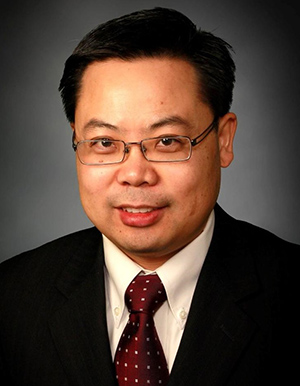 Xianbin Wang
Xianbin Wang
Xianbin Wang (Fellow, IEEE) is a Professor and a Tier-1 Canada Research Chair in 5G and Wireless IoT Communications at Western University, Canada. His current research interests include 5G/6G technologies, Internet of Things, machine learning, communications security, and intelligent communications. He has over 600 highly cited journals and conference papers, in addition to over 30 granted and pending patents and several standard contributions.
Dr. Wang is a Fellow of the Canadian Academy of Engineering and a Fellow of the Engineering Institute of Canada. He has received many prestigious awards and recognitions, including the IEEE Canada R. A. Fessenden Award, Canada Research Chair, Engineering Research Excellence Award at Western University, Canadian Federal Government Public Service Award, Ontario Early Researcher Award, and nine Best Paper Awards. He was involved in many IEEE conferences, including GLOBECOM, ICC, VTC, PIMRC, WCNC, CCECE, and CWIT, in different roles, such as General Chair, TPC Chair, Symposium Chair, Tutorial Instructor, Track Chair, Session Chair, and Keynote Speaker. He serves/has served as the Editor-in-Chief, Associate Editor-in-Chief, and editor/associate editor for over ten journals. He was the Chair of the IEEE ComSoc Signal Processing and Computing for Communications (SPCC) Technical Committee and is currently serving as the Central Area Chair of IEEE Canada
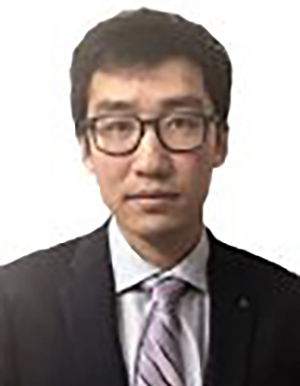 Pengyi Jia
Pengyi Jia
Pengyi Jia received the M.Eng. and Ph.D. degrees from the Department of Electrical and Computer Engineering, Western University, ON, Canada, in 2016 and 2021, respectively. He is currently a Post-Doctoral Associate at Western University. His research interests include intelligent network synchronization, digital twin, and machine learning, as well as their applications in vertical IoT systems and wireless networks. One focus of his recent research is to develop goal-oriented digital twin paradigms for optimized network operation and service provisioning by exploring spatial-temporal correlations behind the massive sampling data. Dr. Jia has been involved in organizing IEEE CCECE 2021 and served as a TPC Member for many conferences. He is currently serving as the Vice Chair for ComSoc/BTS Joint Chapter in IEEE London Section.
T26: Machine Learning Over-the-Air: A Tale of Interference
Speakers: Howard Yang (Zhejiang University, China & University of Illinois at Urbana Champaign (UIUC), USA); Zihan Chen (Singapore University of Technology and Design & National University of Singapore, Singapore); Tony Q. S. Quek (Singapore University of Technology and Design, Singapore)
Abstract: This tutorial aims to present the current research efforts on implementing machine learning algorithms in wireless systems. Specifically, we provide a comprehensive coverage of a distributed learning paradigm based on over-the-air computing, a.k.a. over-the-air machine learning (OTA-ML). We will present the general architecture, model training algorithm, and an analytical framework that establishes the convergence rate of OTA-ML. The analysis takes into account key effects from wireless transmissions, i.e. channel fading and interference, on the convergence performance, disclosing how interference deteriorates the model training process. Then, we elaborate on several improvements to the OTA-ML from different aspects. Particularly, we introduce model pruning schemes that reduce the computation and communication overheads for OTA-ML. We also discuss algorithmic approaches for system enhancements by adopting adaptive optimization methods to accelerate the model training, leveraging gradient clipping to improve the robustness of the training process, and a personalization framework to cope with system heterogeneity. Finally, we will introduce the analysis of generalization error of the statistical models trained by OTA-ML, which shows that wireless interference has the positive potential of improving the generalization capability. A few signal-processing methods that exploit interference for a better generalization will also be discussed.
T27: Wi-Fi Sensing: Use Cases, Standard Technologies, and Ecosystem Enablement
Speakers: Cheng Chen and Carlos Cordeiro (Intel Corporation, USA)
Abstract: Conventionally, Wi-Fi radio signals are widely used for data transmissions in a wireless local area network (WLAN). As Wi-Fi becomes ubiquitous in public and private spaces, it has been an interesting topic to also apply Wi-Fi radio signals to sense the environment where these signals propagate and identify changes associated with certain activities. This technique is referred to as Wi-Fi sensing and it has been proven effective in various use cases, such as proximity detection, gesture recognition, and health monitoring. For this reason, the IEEE 802.11 working group formed a new Task Group, 802.11bf, to develop a new amendment to define necessary PHY and MAC protocols to support Wi-Fi sensing in all spectrum bands, including sub-7 GHz bands (2.4 GHz, 5 GHz, and 6 GHz band), as well as 60 GHz millimeter wave (mmWave) band. Recently, the second IEEE 802.11bf technical specifications draft, D2.0, was released, which includes a complete set of features and protocols necessary to support Wi-Fi sensing for 802.11-compliant devices. In this tutorial, our primary goal is to identify and describe the basic elements that have been developed in 802.11bf to enable Wi-Fi sensing applications in different WLAN scenarios and show an early implementation of the technology.
Bios
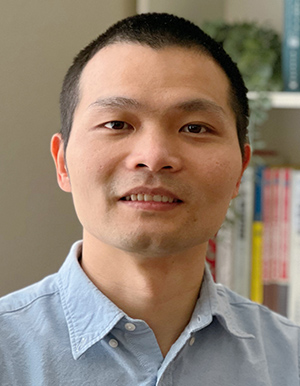 Cheng Chen
Cheng Chen
Dr. Cheng Chen is a Software Research Engineer/Scientist at Intel Corporation and a Senior Member of IEEE. He received the Ph.D. degree in Electrical Engineering from Northwestern University in 2016. He is an active contributor to various IEEE 802.11 standards, including IEEE 802.11ay (Next-generation 60 GHz Wi-Fi), 802.11be (Extremely High Throughput Wi-Fi) and 802.11bf (WLAN Sensing), as well as multiple certification programs in the Wi-Fi Alliance, including Wi-Fi 6, Wi-Fi 6E and Wi-Fi 7. Due to his outstanding contributions to multiple standards forums, Dr. Chen received several awards, including the Award for Outstanding Contributions for the development of IEEE Standard 802.11ay by the IEEE Standards Association, and the Leadership Recognition Award for Wi-Fi 6 R2 launch by the Wi-Fi Alliance.
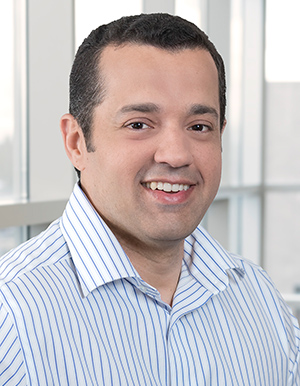 Carlos Cordeiro
Carlos Cordeiro
Carlos Cordeiro is an Intel Fellow and serves as the wireless CTO in Intel’s client computing group. Carlos leads Intel’s global wireless connectivity standards and ecosystem team and is responsible for defining Intel’s next generation wireless connectivity technology strategy, ecosystem engagements, and regulatory planning. Carlos has had a leading role in the technology development, standardization and productization of various generations of Wi-Fi and Bluetooth, having developed major technology innovations that are found in billions of wireless devices. He is an IEEE Fellow and has served as the chairman of the Board of Directors of the Wi-Fi Alliance, the organization that defines Wi-Fi. Carlos received several awards including the Wireless Broadband Alliance’s prestigious CTO of the Year Award in 2022, the 2017 IEEE Standards Medallion, the Intel Inventor of the Year Award in 2016, the IEEE Outstanding Engineer Award in 2011, and the IEEE New Face of Engineering Award in 2007. He is the co-author of two textbooks on wireless published in 2006 and 2011, has published over 130 papers, and holds over 450 patents. He is the associate editor-in-chief of the IEEE Communications Standards Magazine and has served as Editor of various journals.
T28: Full-Duplex MIMO for Simultaneous Communications and Sensing
Speakers: George C. Alexandropoulos (University of Athens, Greece); Besma Smida (University of Illinois at Chicago, USA)
Abstract: This tutorial will discuss the latest advances in the in-band Full Duplex (FD) Multiple-Input Multiple-Output (MIMO) technology, focusing on its recent promising considerations for realizing communications and localization/sensing in the same time and frequency resources. The evolution of in-band FD radios, from their initial proof of concept till their recent partial consideration in 3GPP Release 17, under the integrated access and backhaul paradigm, will be discussed together with their various emerging simultaneous transmit and receive MIMO architectures (fully digital, hybrid analog and digital, metasurface-antenna based, wideband, as well as integrated with Reconfigurable Intelligent Surfaces (RISs)) for different frequency bands and operational conditions (far- and near-field). Information processing schemes, including machine learning approaches, for realizing simultaneous data communication and channel estimation, sensing-aided beam alignment and localization, as well as simultaneous uplink and downlink communications and tracking of moving targets will be presented. The tutorial will be concluded with a detailed discussion on novel perspectives and future directions for FD-MIMO-enabled Integrated Sensing and Communications (ISAC) in the upcoming 6G wireless networks.
Bios
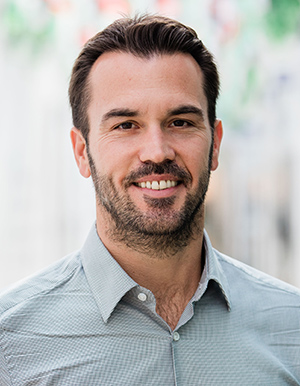 George C. Alexandropoulos
George C. Alexandropoulos
George C. Alexandropoulos received the Engineering Diploma, M.A.Sc., and Ph.D. degrees in Computer Engineering and Informatics from the School of Engineering, University of Patras, Greece in 2003, 2005, and 2010, respectively. He is currently an Associate Professor with the Department of Informatics and Telecommunications, School of Sciences, National and Kapodistrian University of Athens (NKUA), Greece, and serves as a Principal Researcher for the Technology Innovation Institute, Abu Dhabi, United Arab Emirates. His research interests span the general areas of algorithmic design and performance analysis for wireless networks with emphasis on multi-antenna transceiver hardware architectures, active and passive RISs, full duplex radios, integrated communications and sensing, millimeter wave and THz communications, as well as distributed machine learning algorithms. He currently serves as an Editor for IEEE Transactions on Communications, IEEE Wireless Communications Letters, ELSEVIER Computer Networks, Frontiers in Communications and Networks, and the ITU Journal on Future and Evolving Technologies. In the past, he has held various fixed-term and guest editorial positions for IEEE Transactions on Wireless Communications and IEEE Communications Letters, as well as for various special issues at IEEE journals. Prof. Alexandropoulos is a Senior Member of the IEEE Communications, Signal Processing, Vehicular Technology, and Information Theory Societies as well as a registered Professional Engineer of the Technical Chamber of Greece. He is also a Distinguished Lecturer of the IEEE Communications Society and has given numerous tutorials on RISs and RIS-enabled smart wireless environments. He has participated and/or technically managed more than 15 European Union (EU), international, and Greek research, innovation, and development projects. He is currently NKUA's principal investigator for the EU H2020 RISE-6G, SNS JU TERRAMETA, SNS JU 6G-DISAC, and ESA PRISM projects dealing with RIS-empowered smart wireless environments, THz RISs, distributed ISAC, and RIS demonstration for localization and mapping, respectively. For the former project, he also serves as the dissemination manager, whereas, for the second, as the technical manager. Prof. Alexandropoulos has received the best Ph.D. thesis award 2010, the IEEE Communications Society Best Young Professional in Industry Award 2018, the EURASIP Best Paper Award of the Journal on Wireless Communications and Networking 2021, the IEEE Marconi Prize Paper Award in Wireless Communications 2021, the Best Paper Award from the IEEE GLOBECOM 2021, and the IEEE Communications Society Fred Ellersick Prize 2023. More information is available at www.alexandropoulos.info.
 Besma Smida
Besma Smida
Besma Smida (Senior Member, IEEE) is an Associate Professor of electrical and computer engineering with the University of Illinois at Chicago. After completing her appointment as a Post-Doctoral Researcher and later a Lecturer at Harvard University, she became an Assistant Professor of electrical and computer engineering with Purdue University Northwest. She received the M.Sc. and Ph.D. degrees from the University of Quebec (INRS), Montreal, QC, Canada. She was a Research Engineer with the Technology Evolution and Standards Group of Microcell, Inc., (now Rogers Wireless), Montreal. She took part in wireless normalization committees (3GPP, T1P1).
She has served as North America Chair of IEEE Communication Society, North America (Region 4) representative of IEEE Communication Society, Chair for IEEE Women in Engineering, Chicago Section, Chair of IEEE Communication Chapter, Chicago Section. She currently serves as Area Editor for the IEEE TRANSACTION ON GREEN COMMUNICATIONS AND NETWORKING, Editor for the IEEE TRANSACTIONS ON COMMUNICATIONS and IEEE OPEN JOURNAL OF THE COMMUNICATIONS SOCIETY. Previously she served as Editor for the IEEE TRANSACTIONS ON WIRELESS COMMUNICATIONS, an Associate Editor for the IEEE COMMUNICATION LETTERS, and a Guest Lead Editor for special issues of the IEEE JOURNAL ON SELECTED AREAS IN COMMUNICATIONS. She is a Communication Society Distinguished Lecturer for 2021-2023. She was highlighted by IEEE Communications Society in their women in engineering in communications series. She was also included in the "100 Brilliant and Inspiring Women in 6G" List. She was awarded the INSIGHT Into Diversity Magazine’s 2015 “100 Inspiring Women in STEM”. She received the Academic Gold Medal of the Governor General of Canada in 2007 and the NSF CAREER award in 2015. She was a recipient of the IEEE GLOBECOM best paper award 2021. Her research focuses on In-band Full-Duplex systems and applications, backscatter modulation, IoT, and two-way communication networks.





